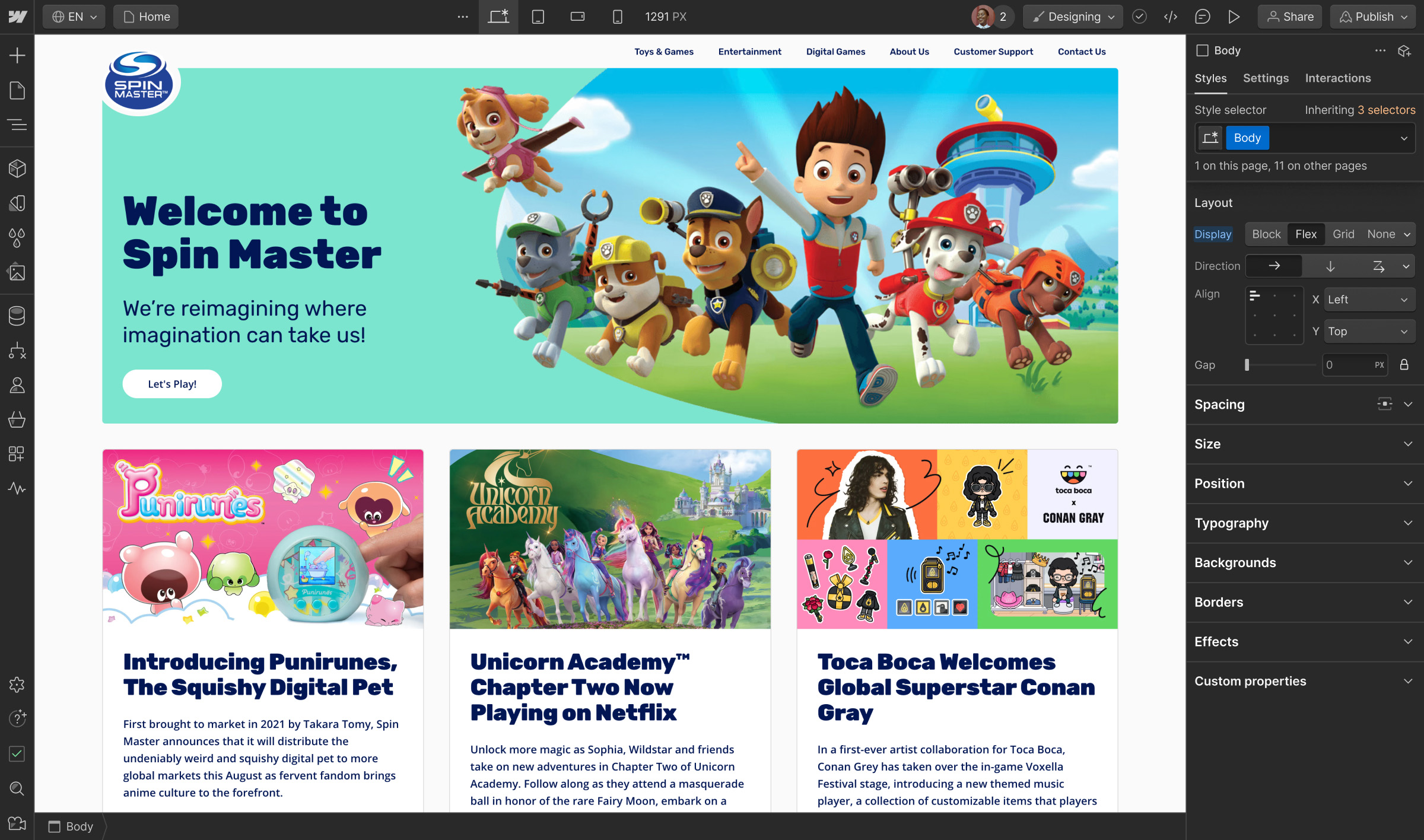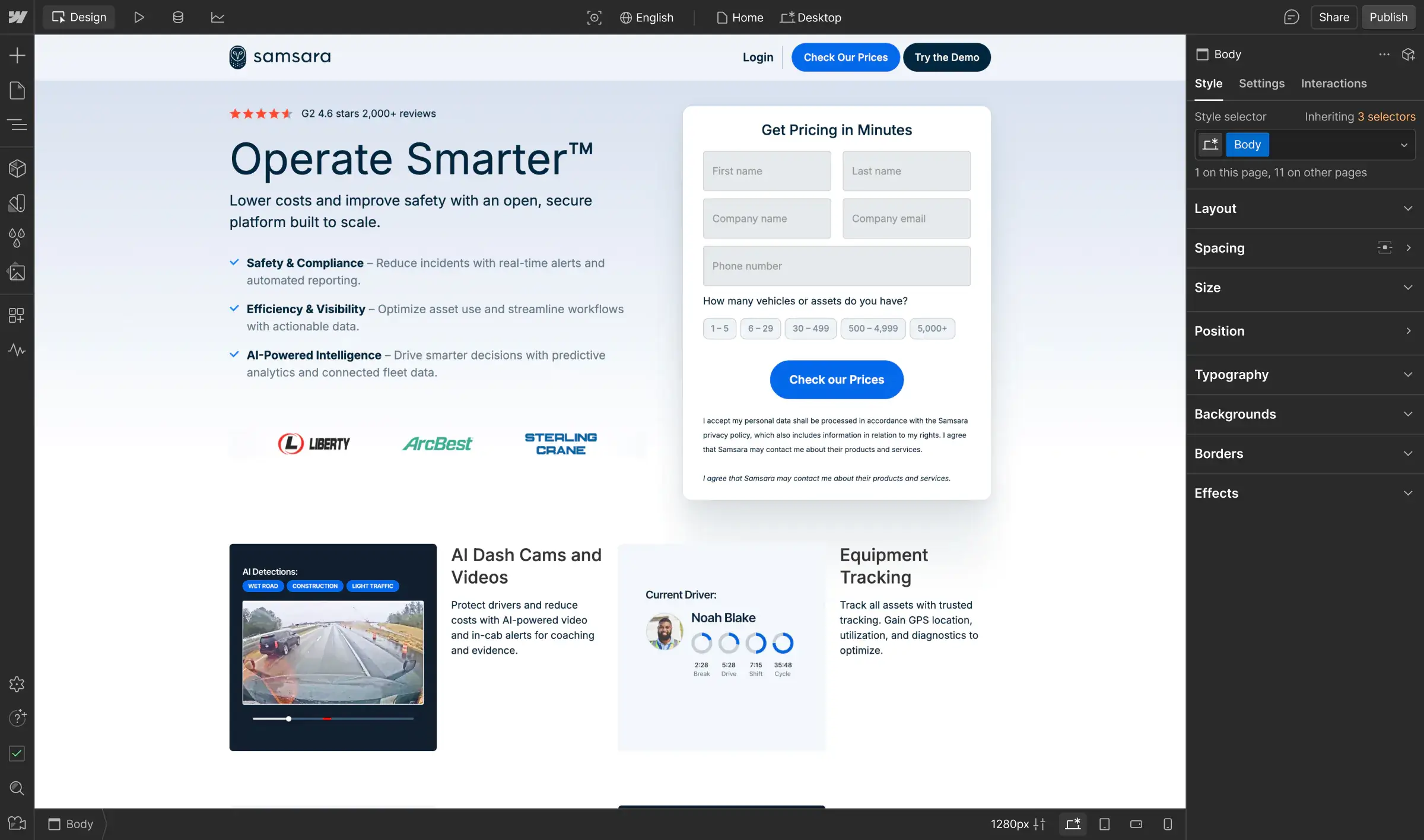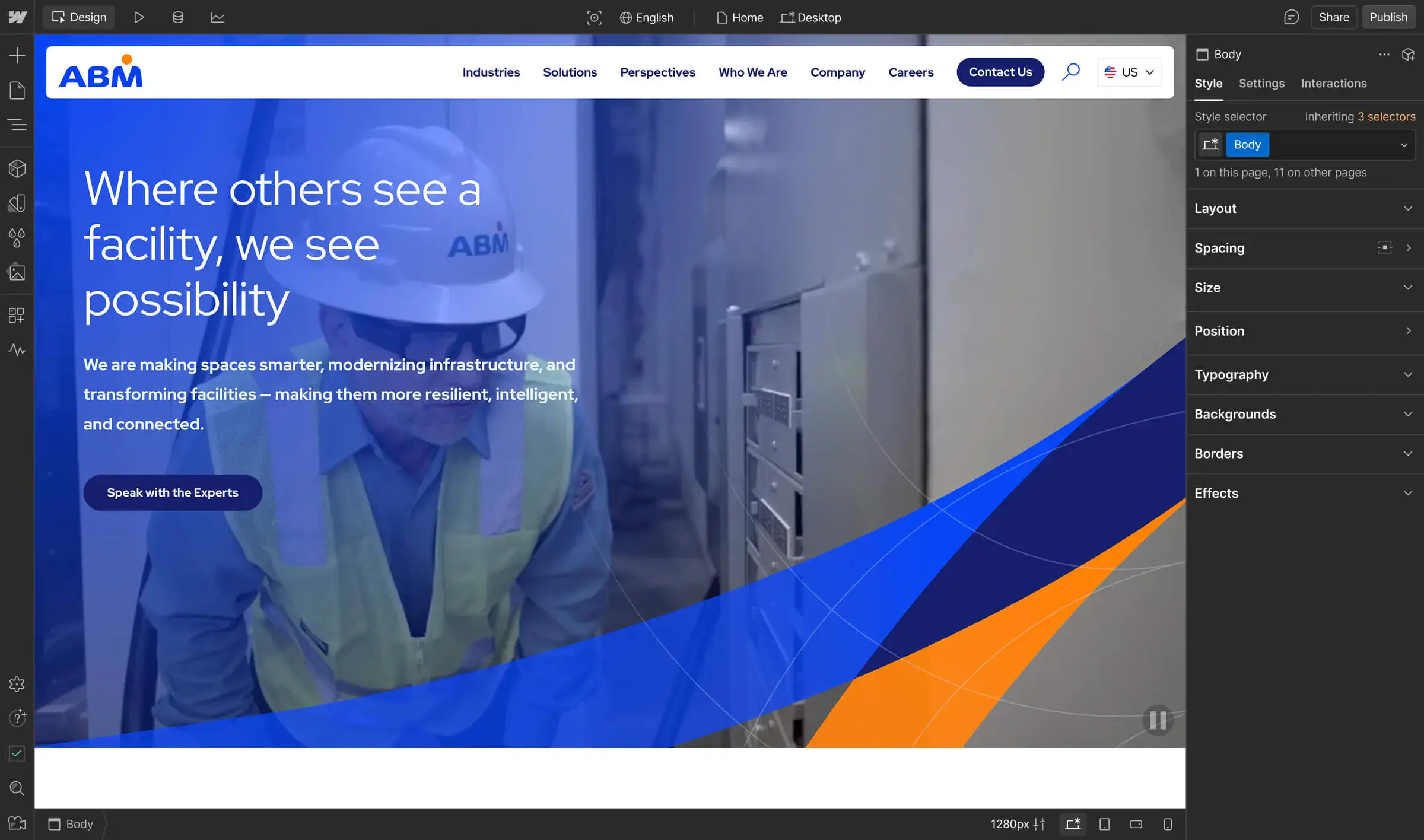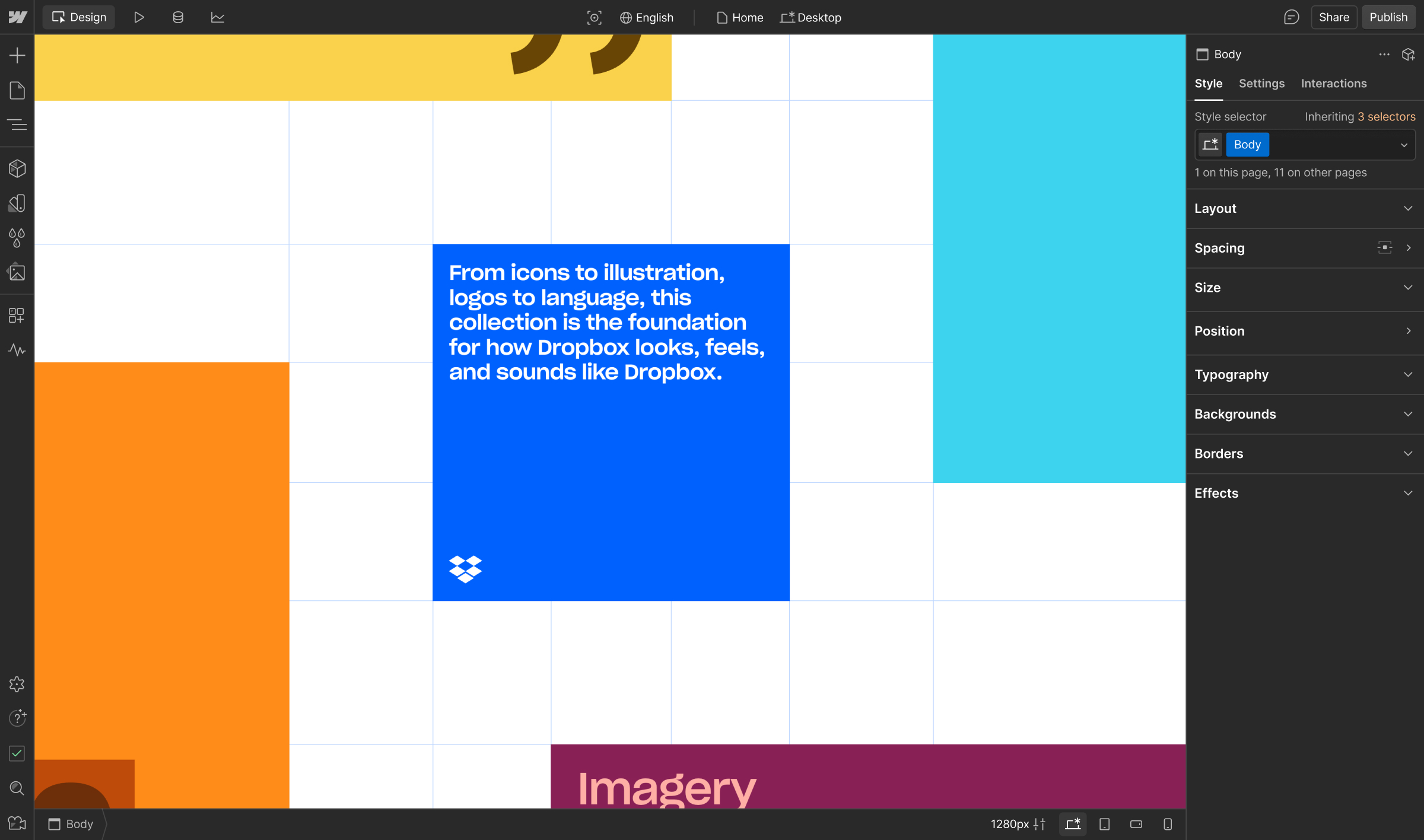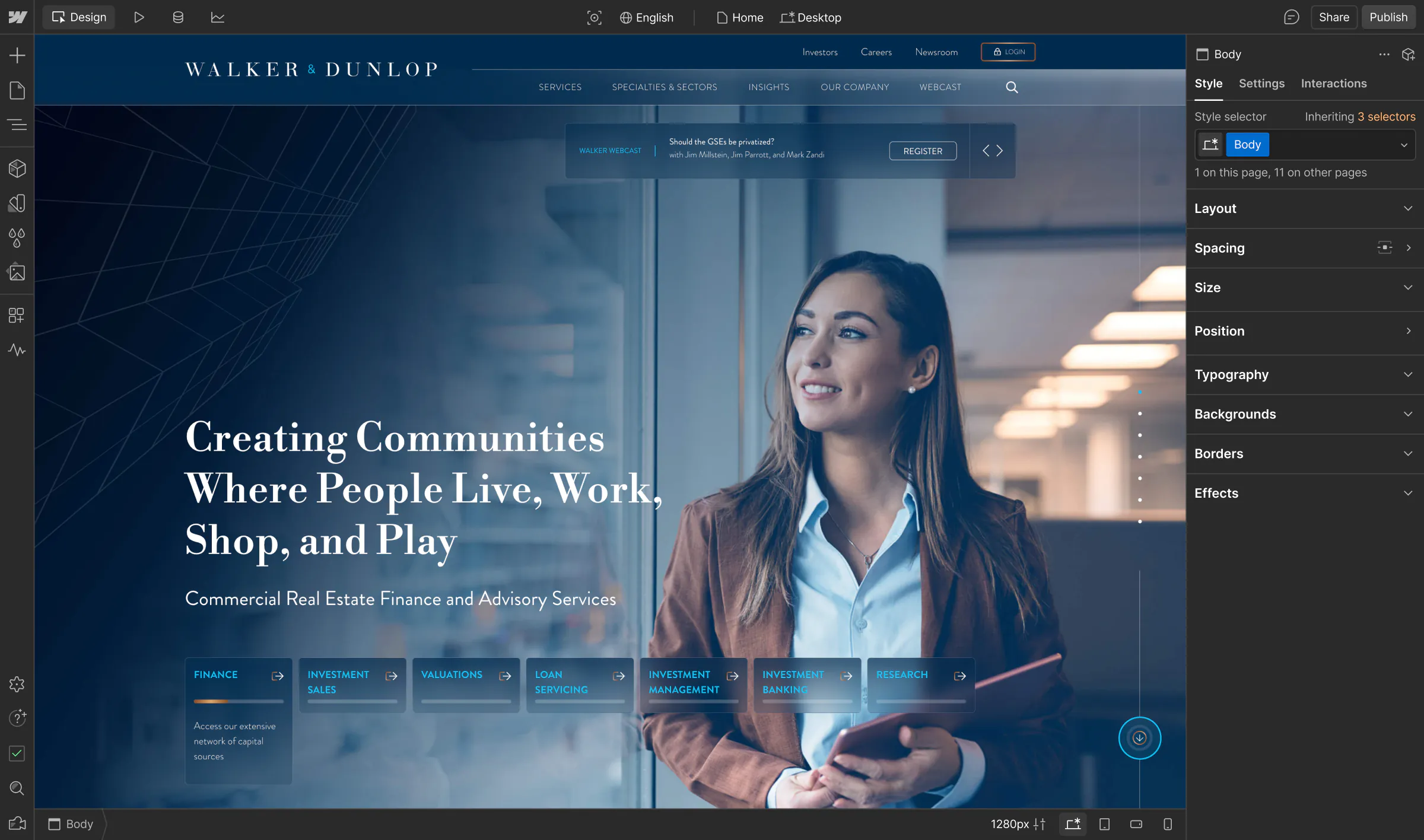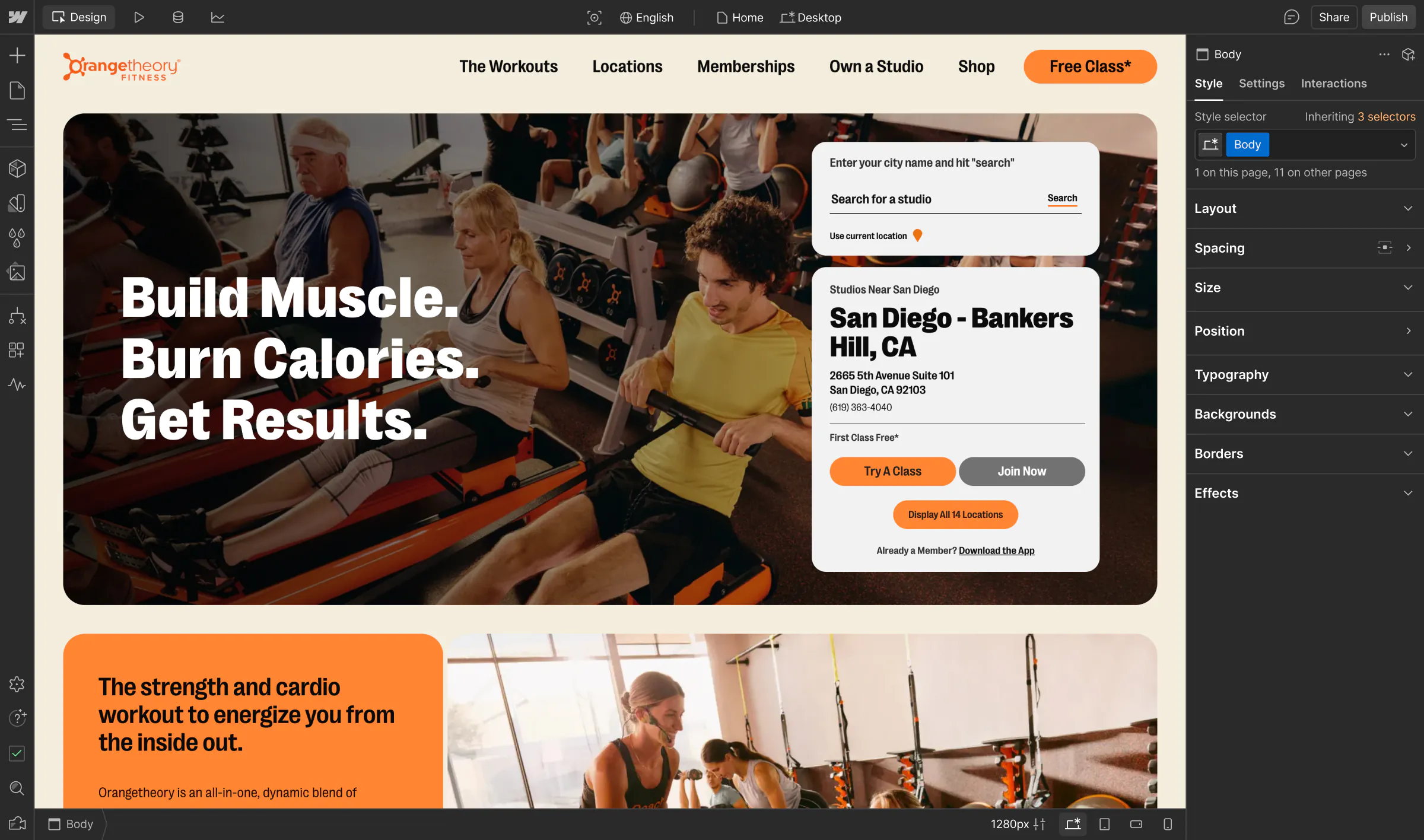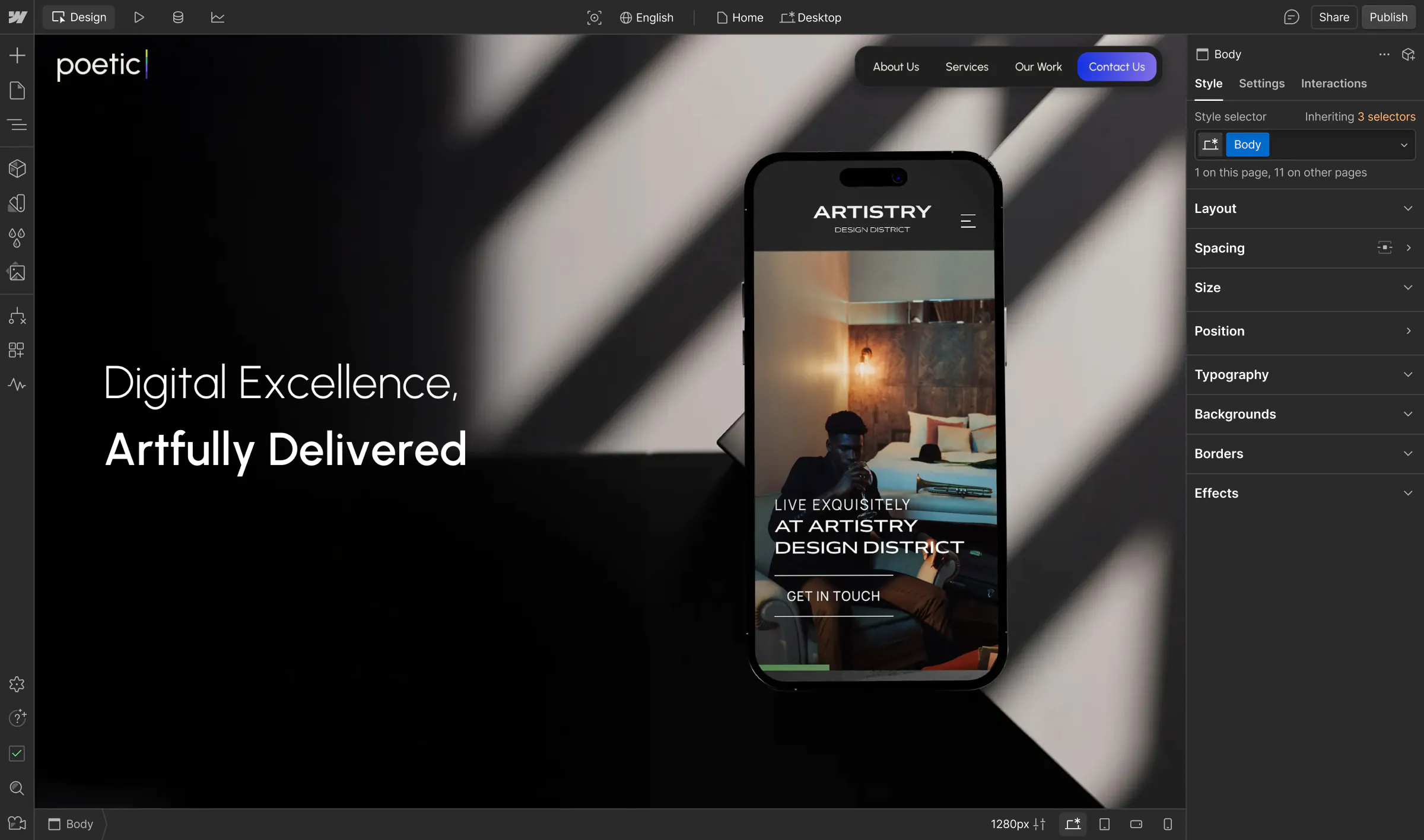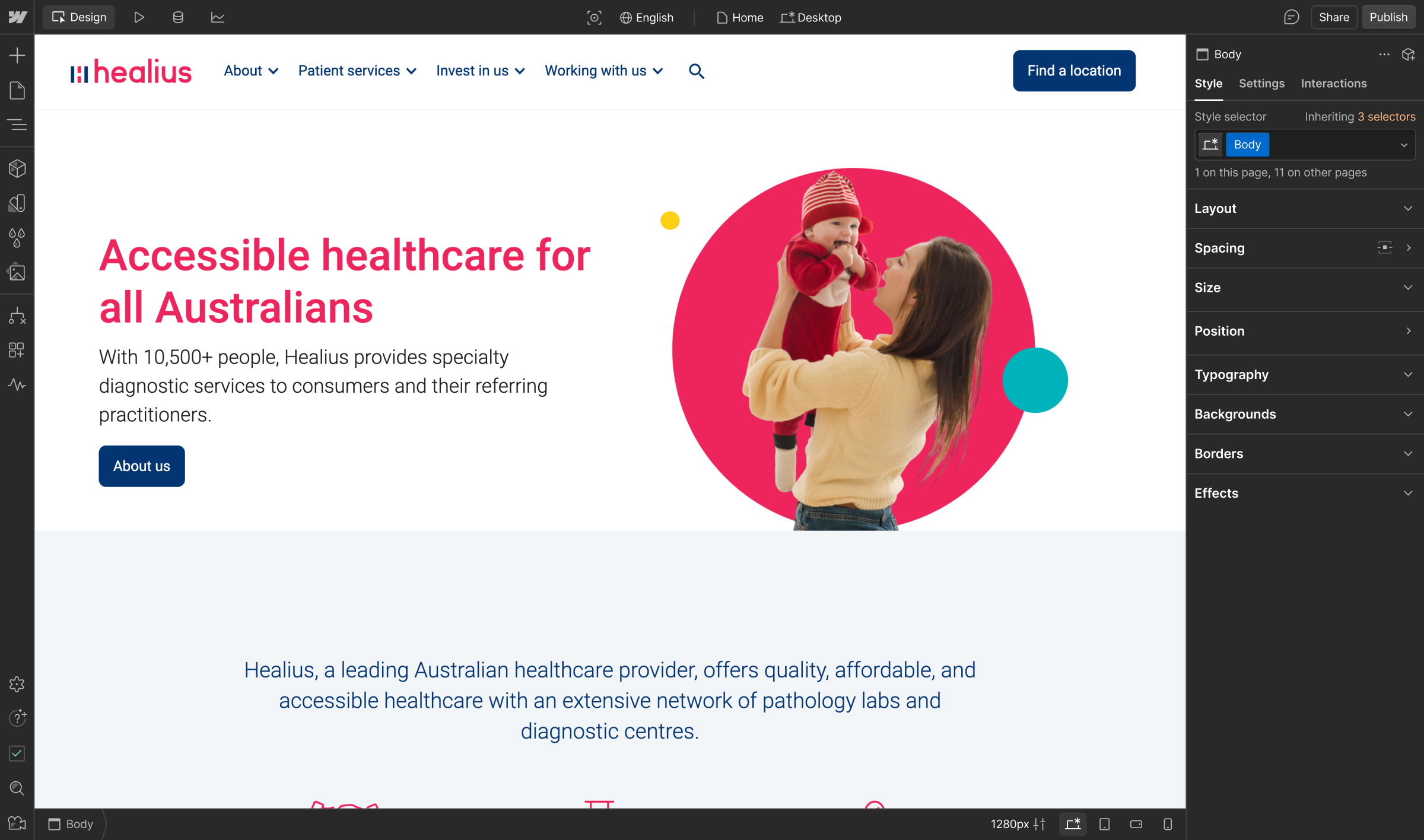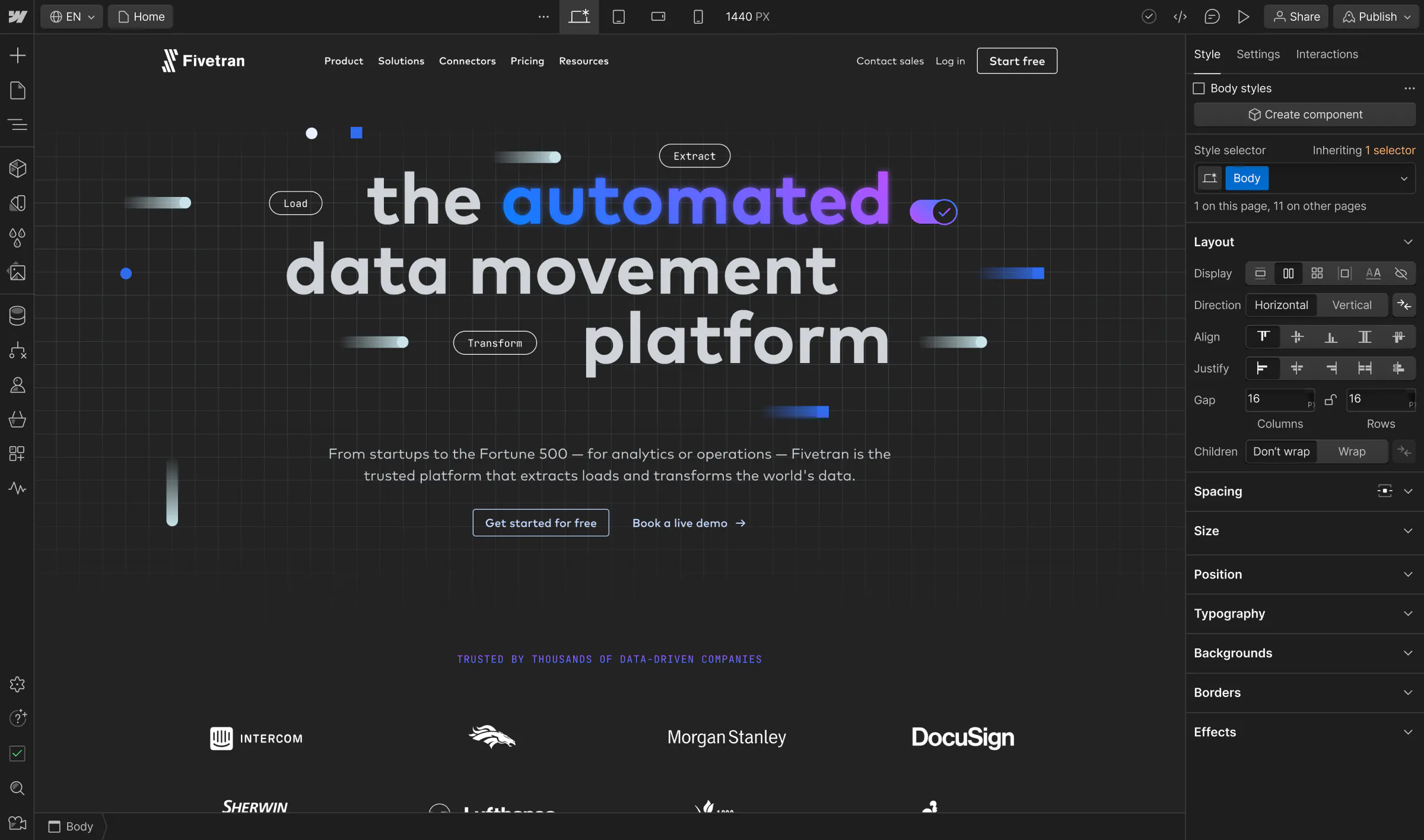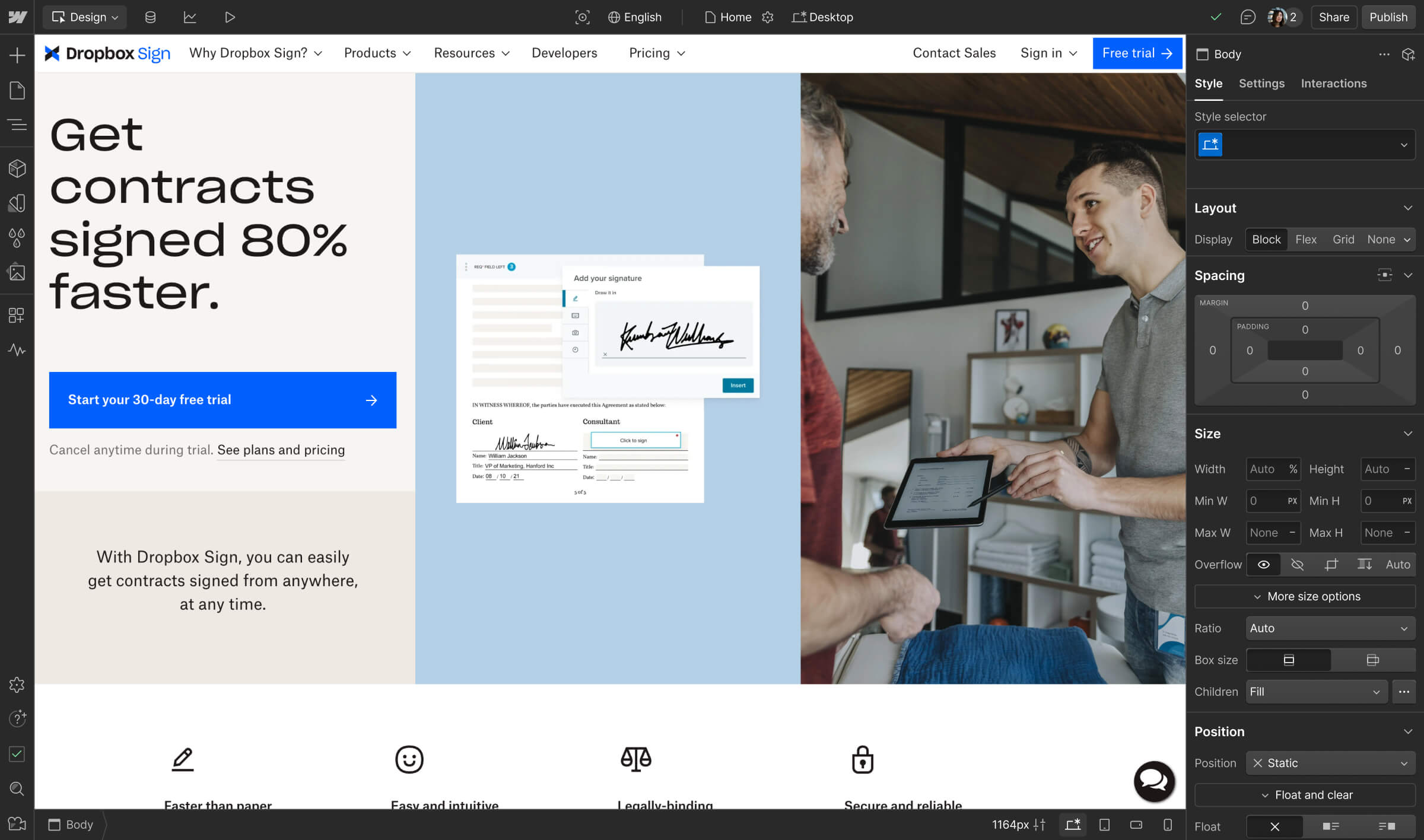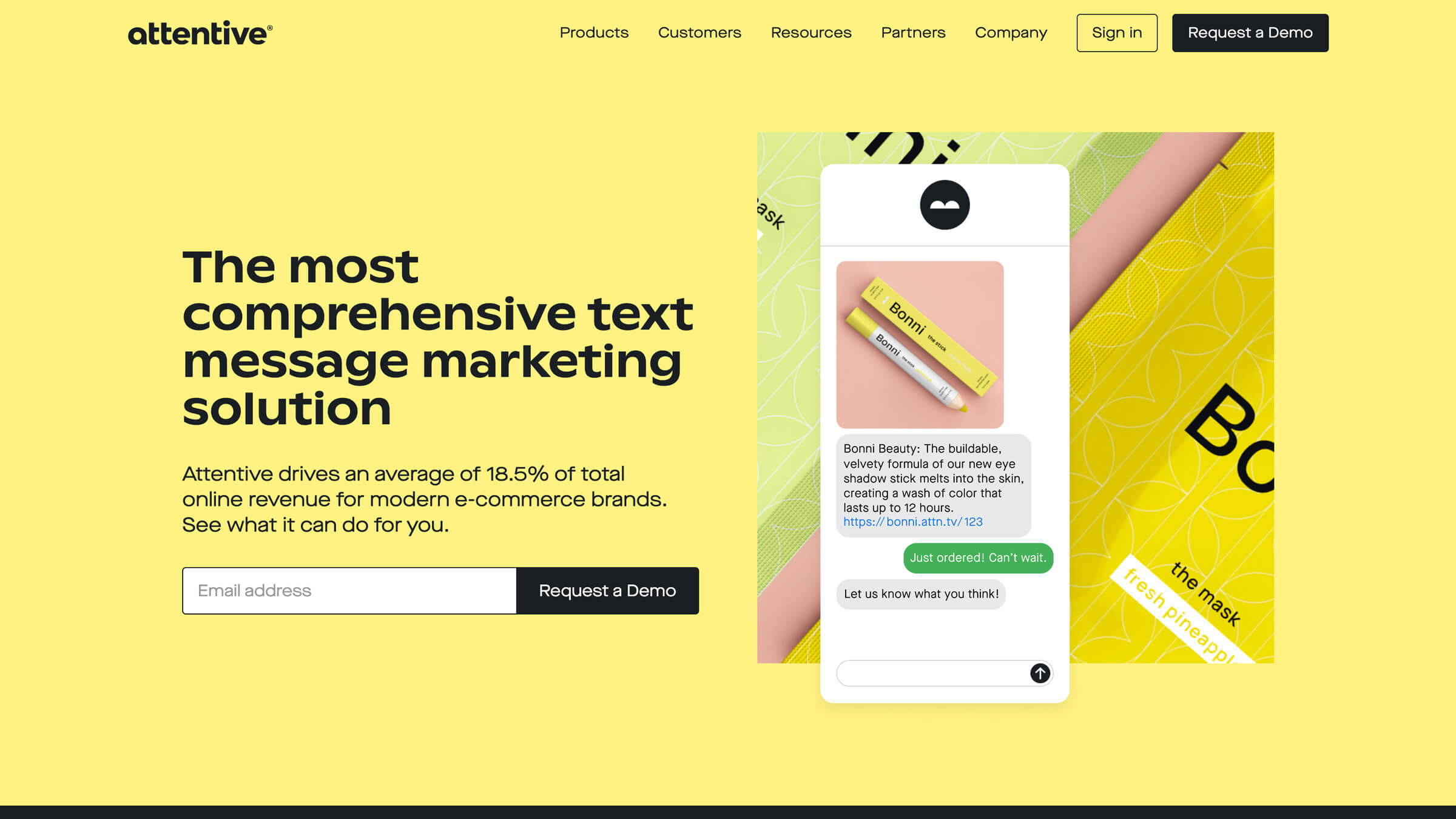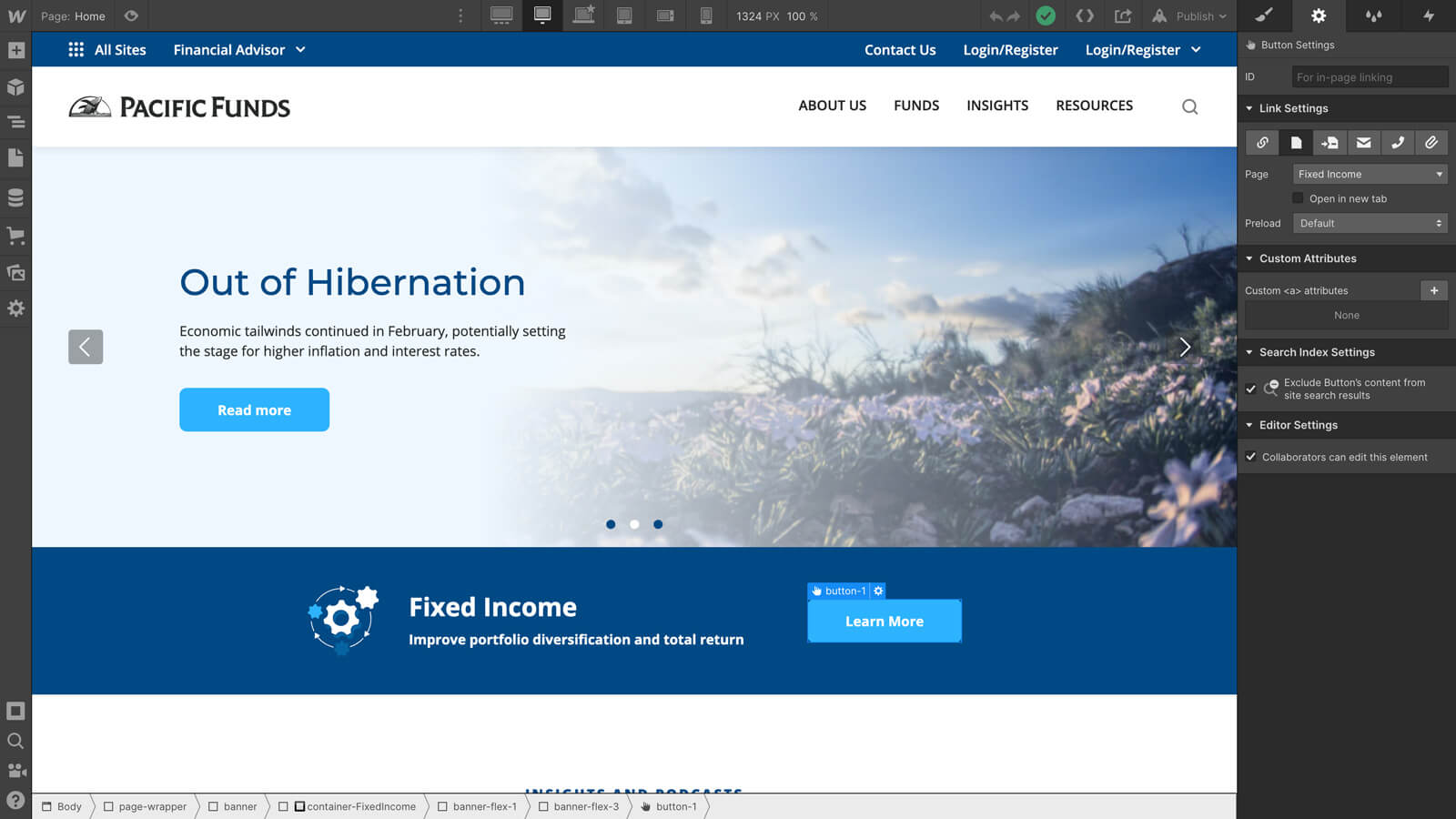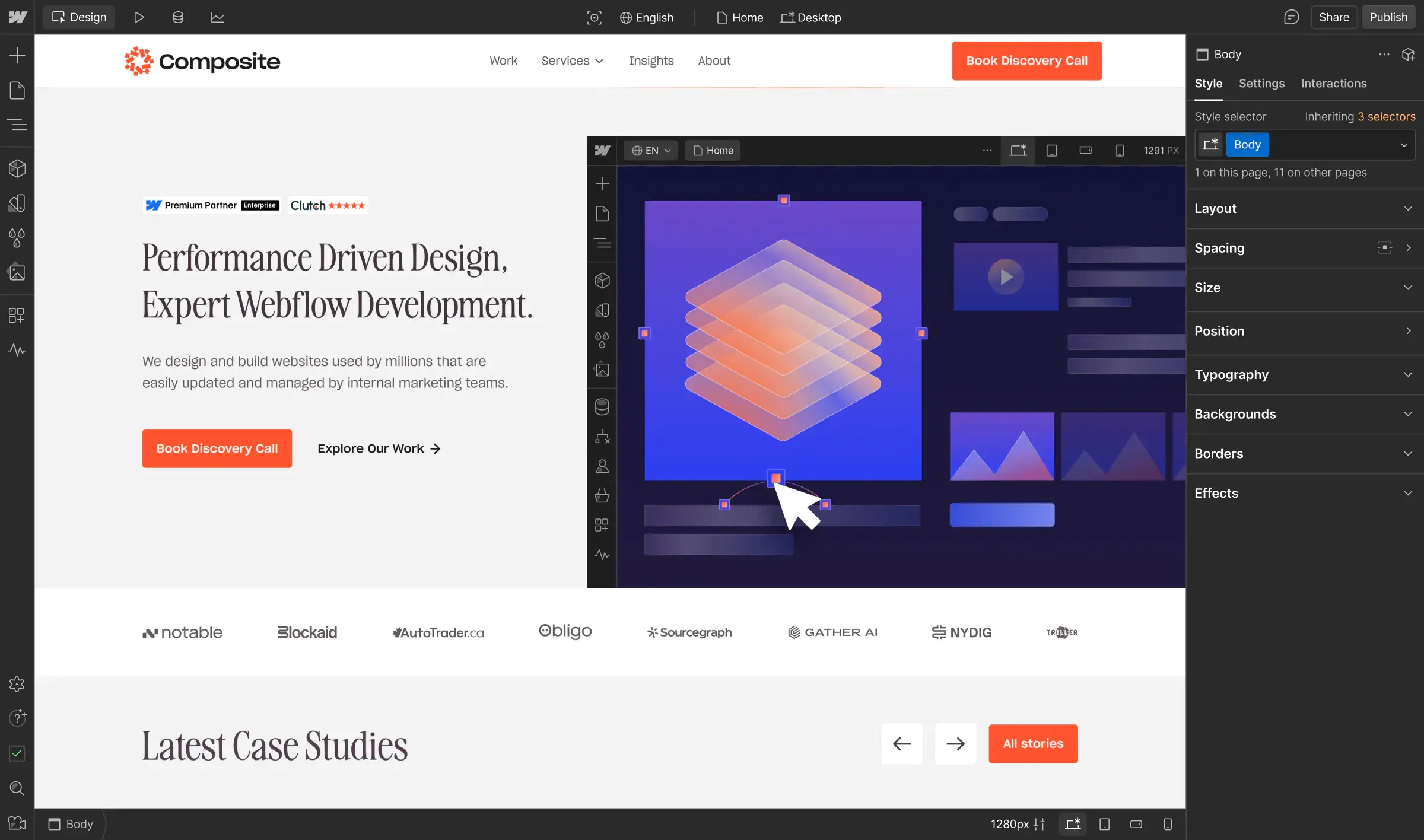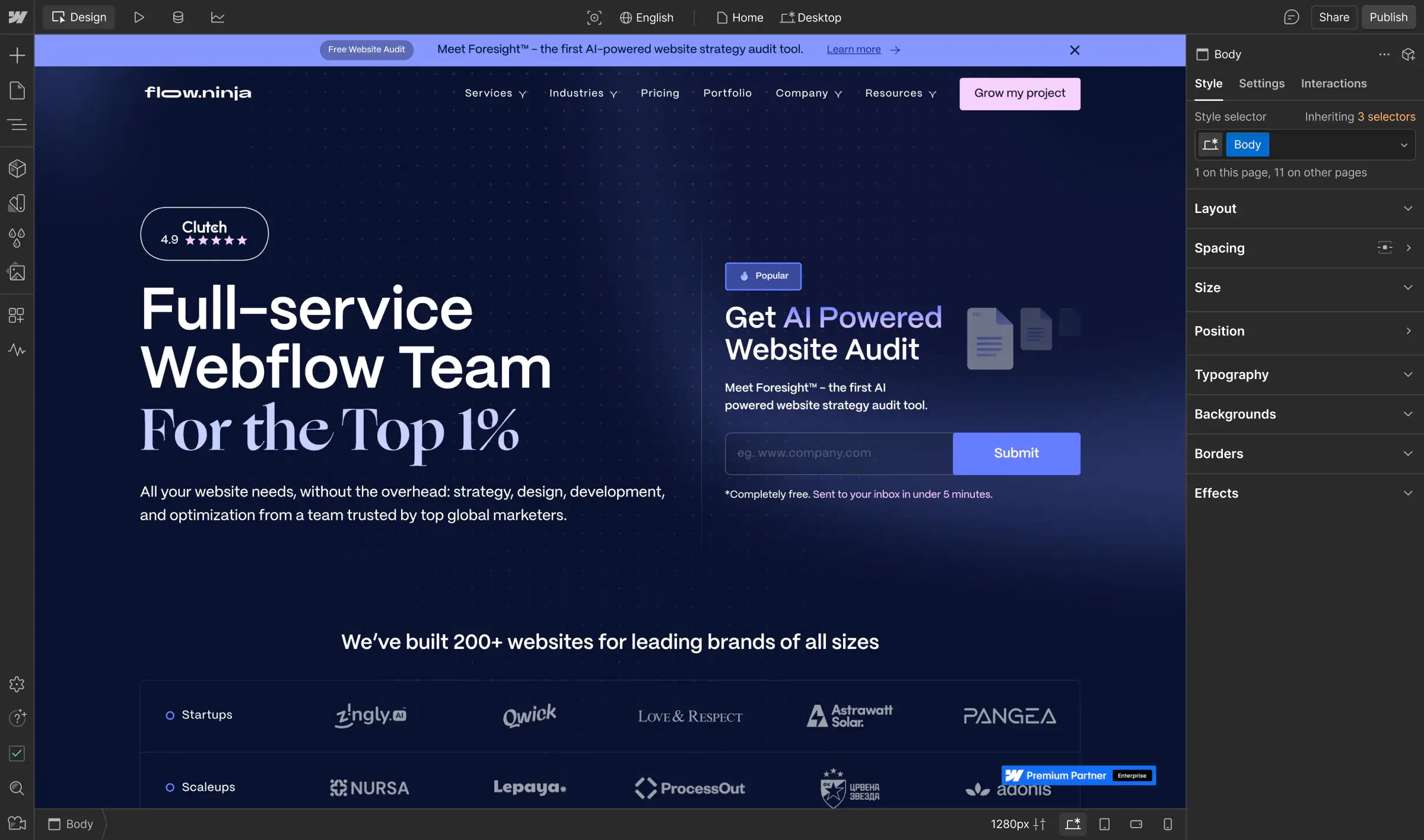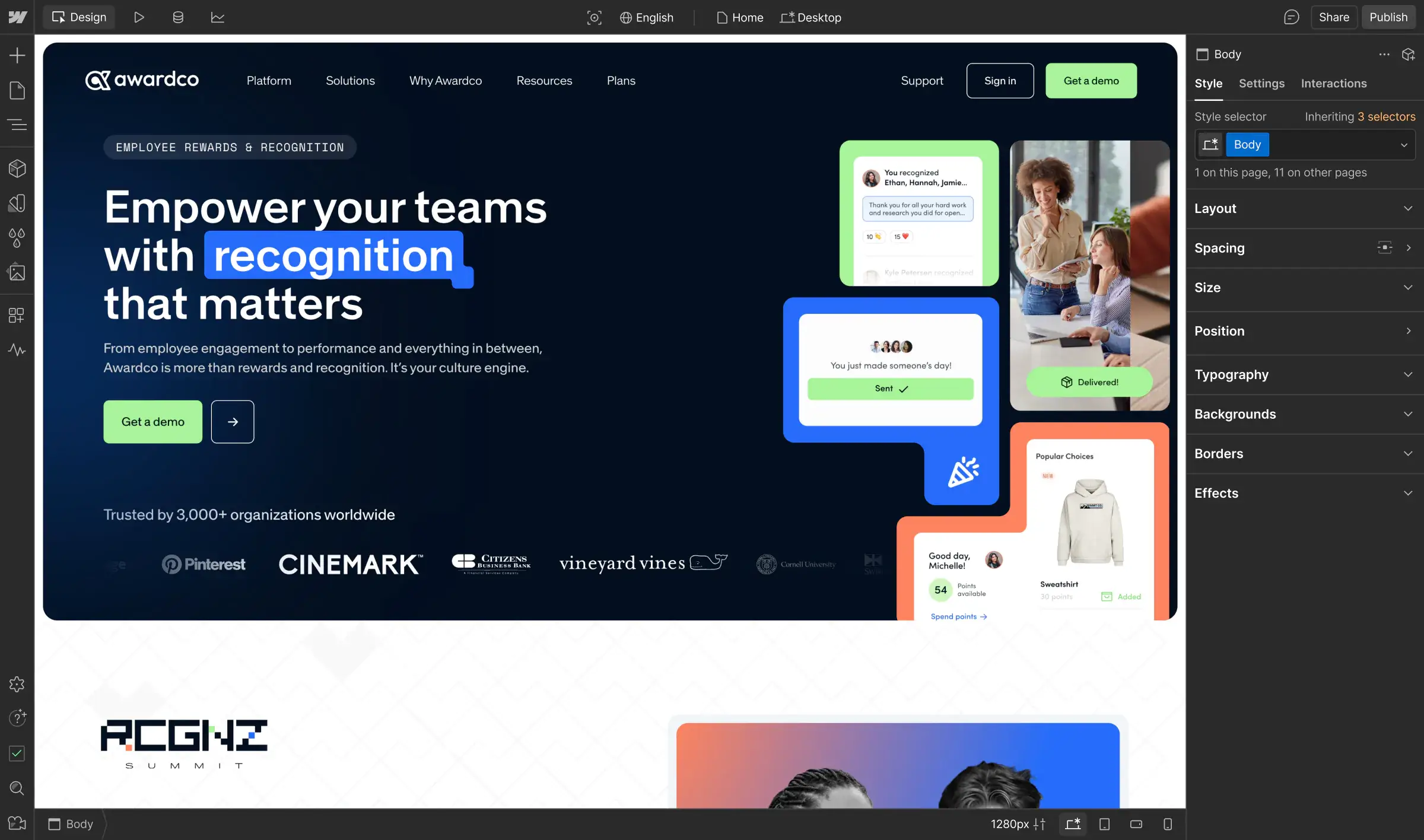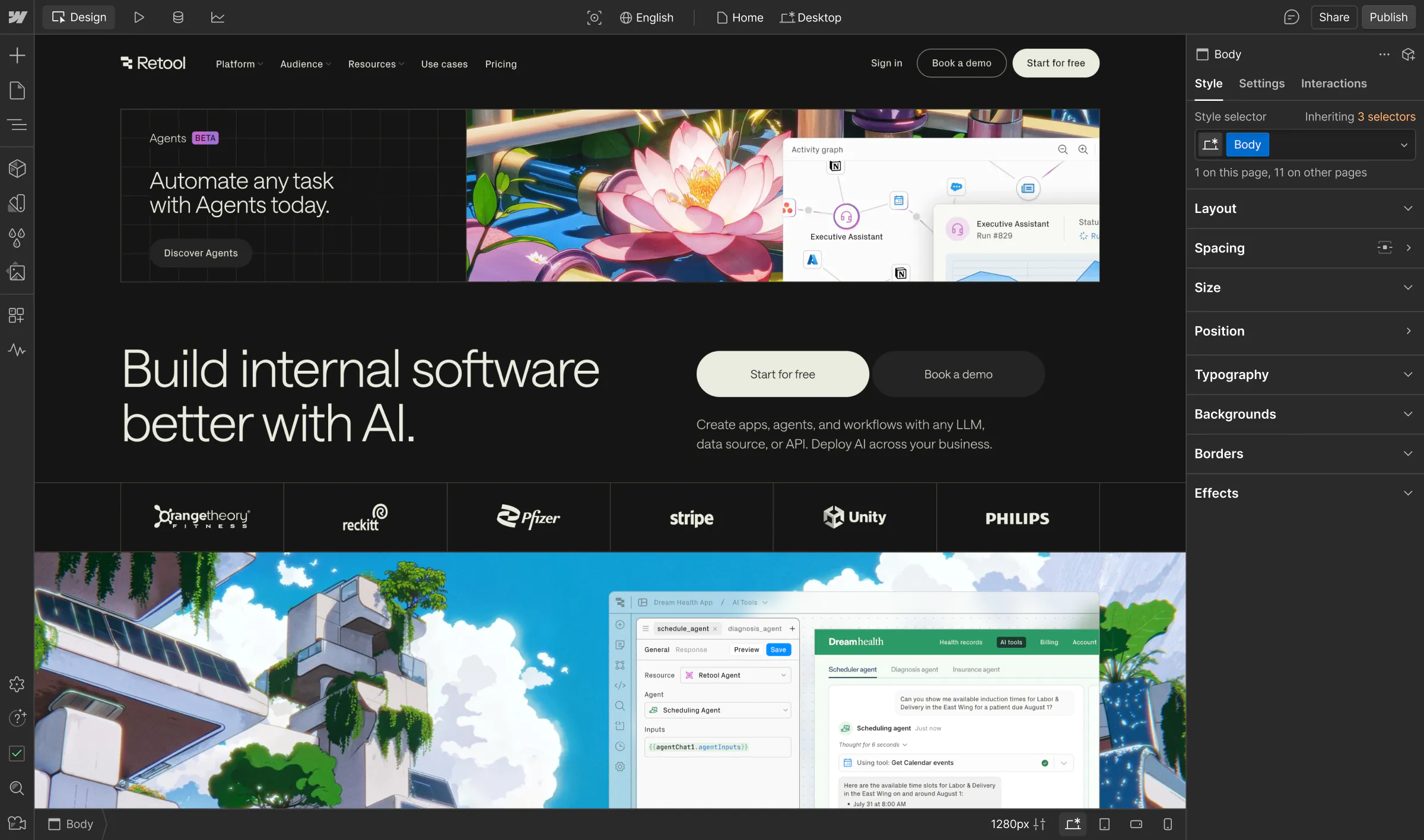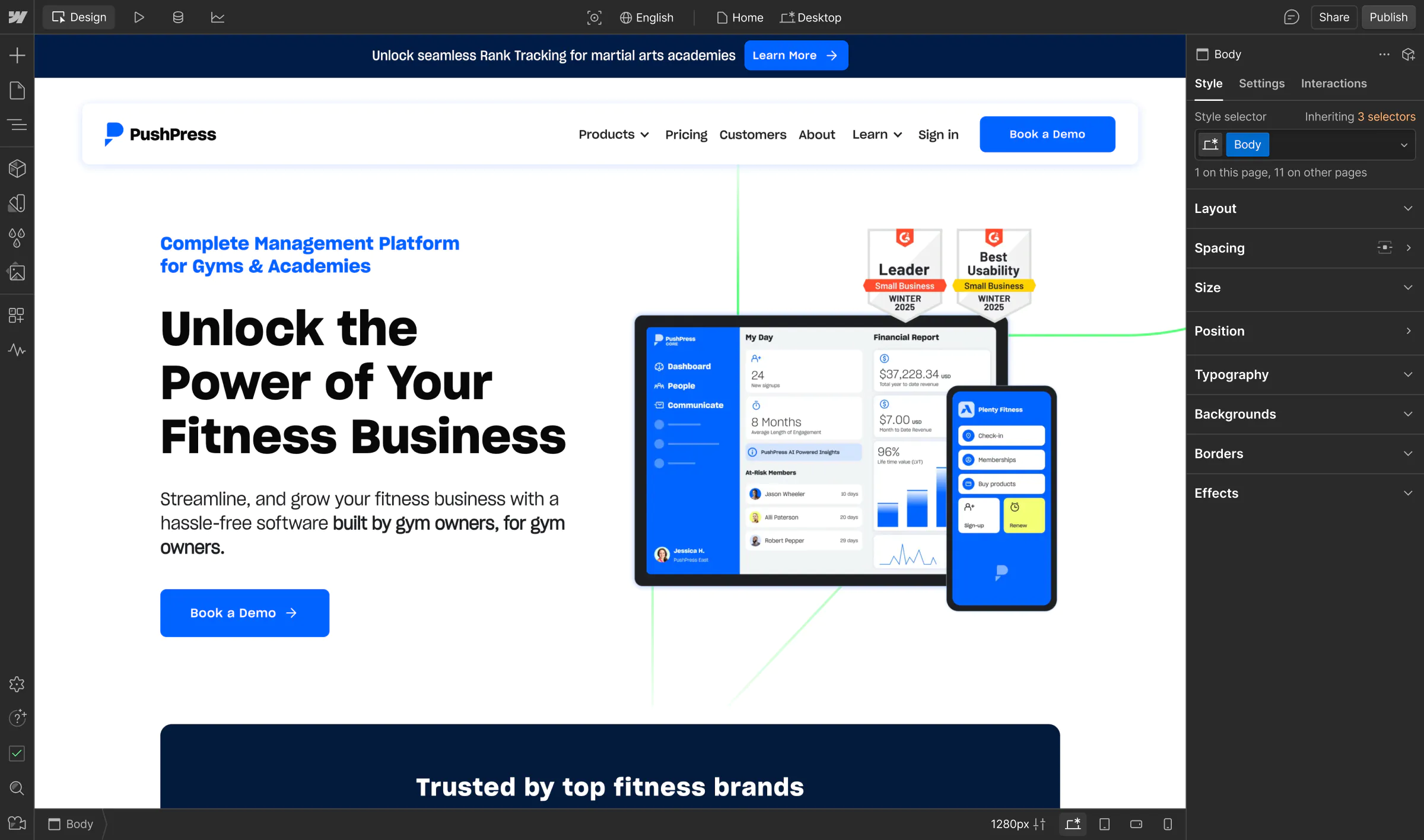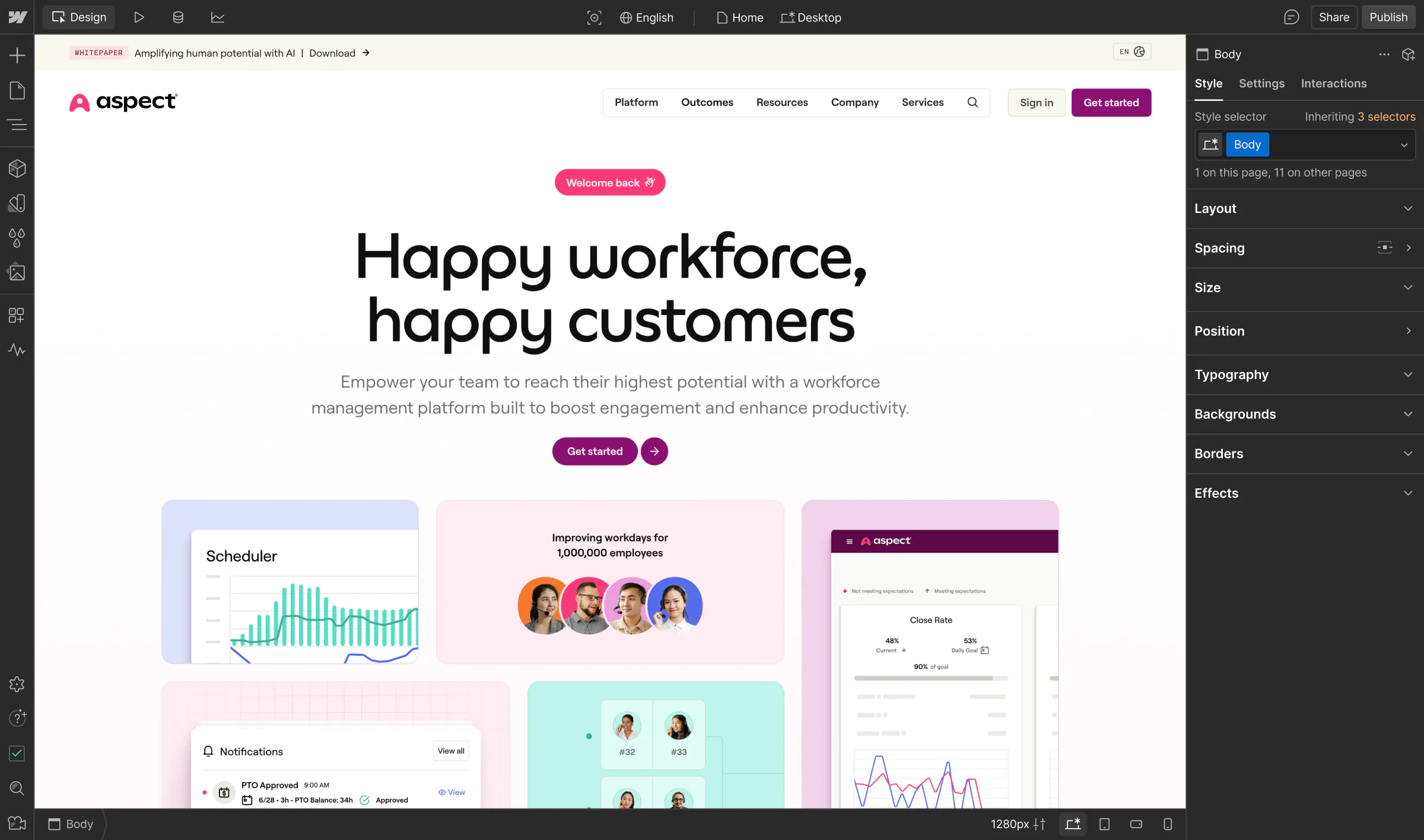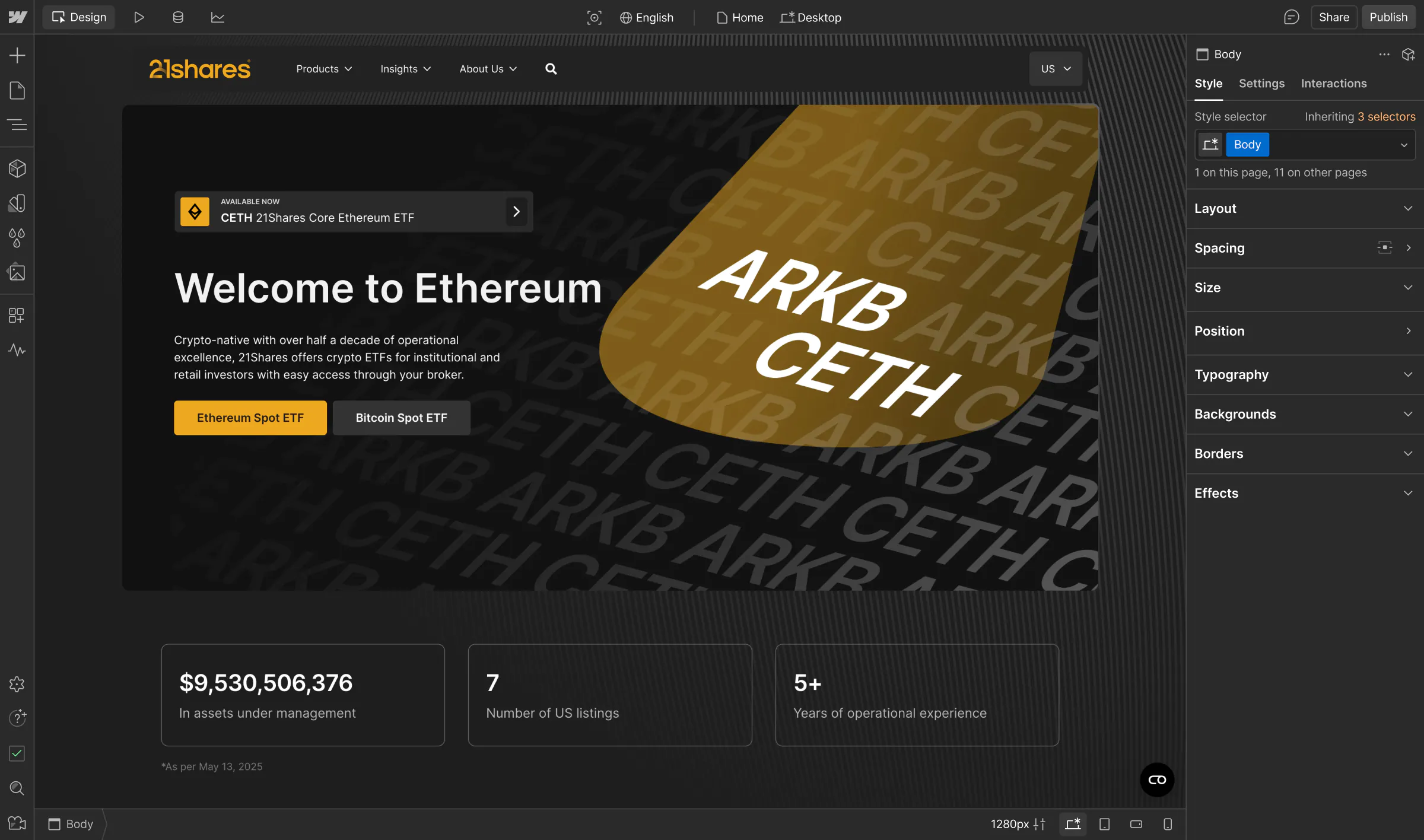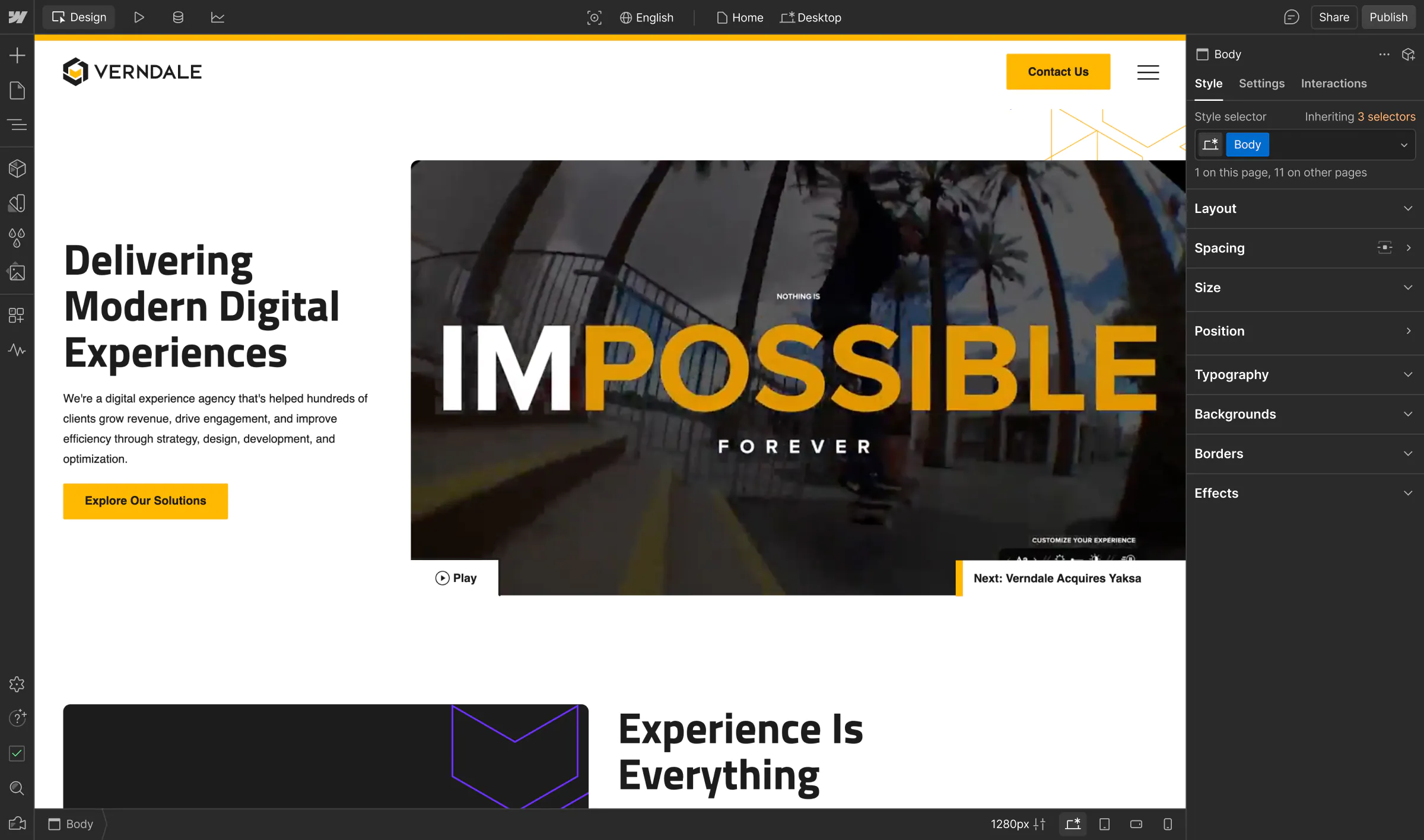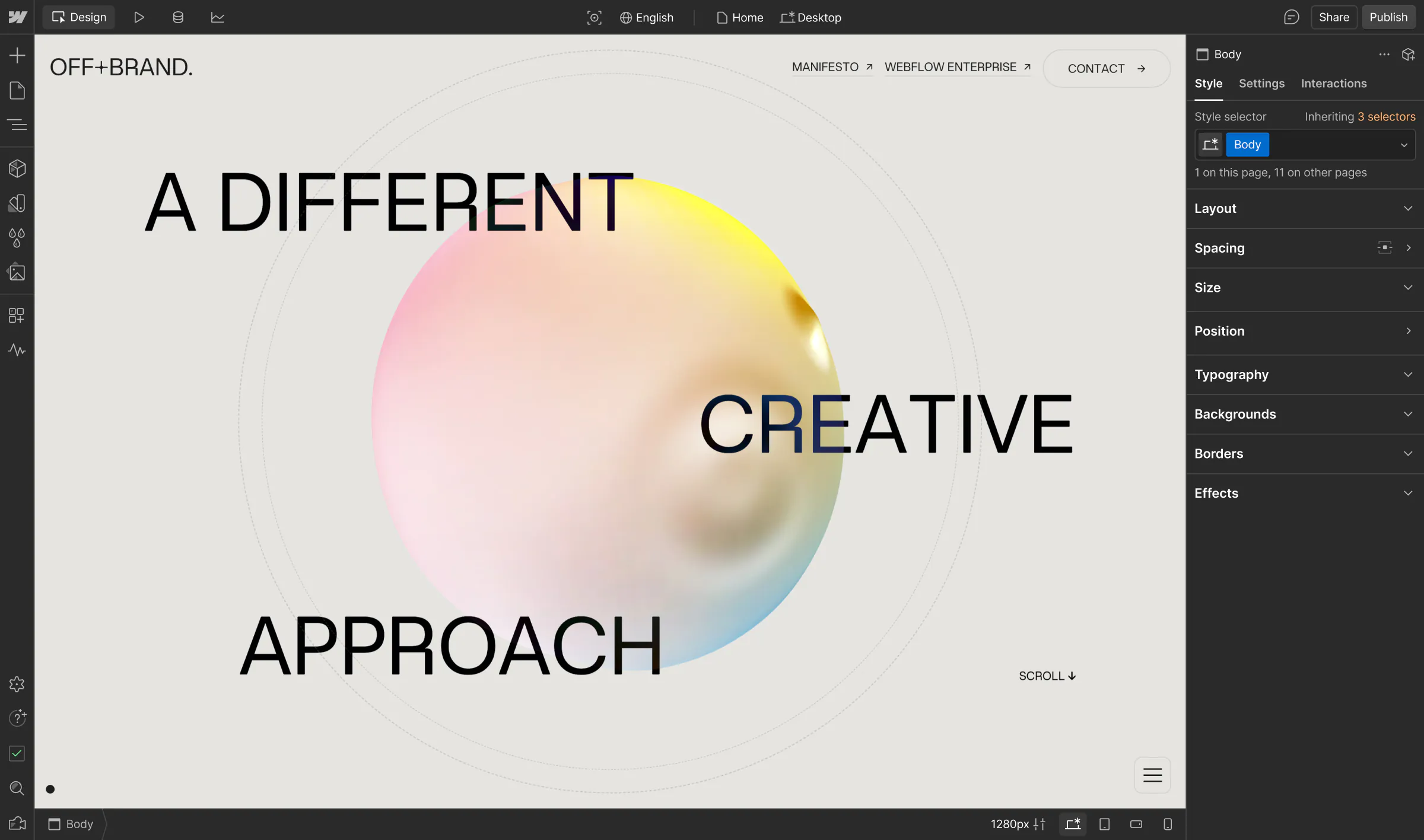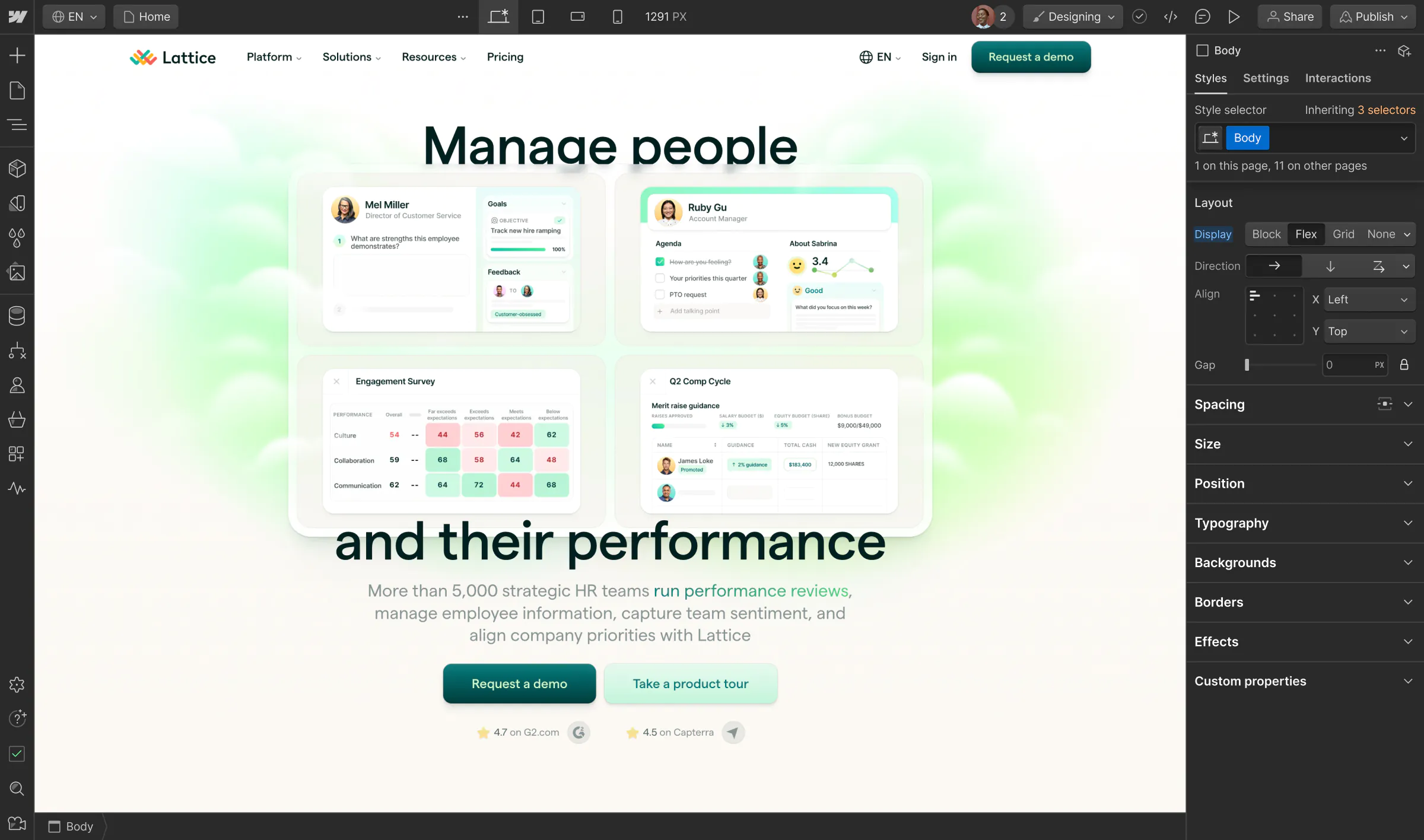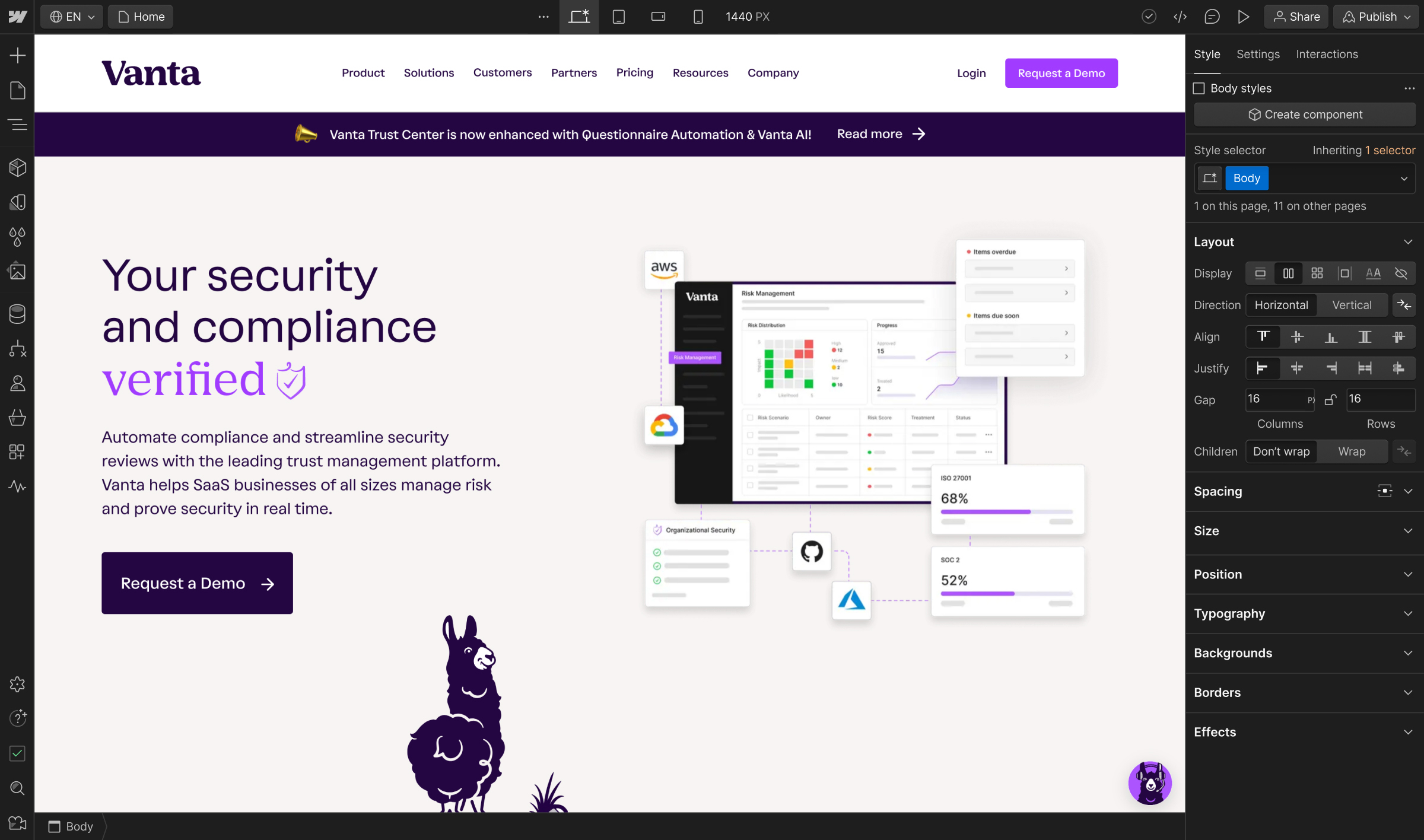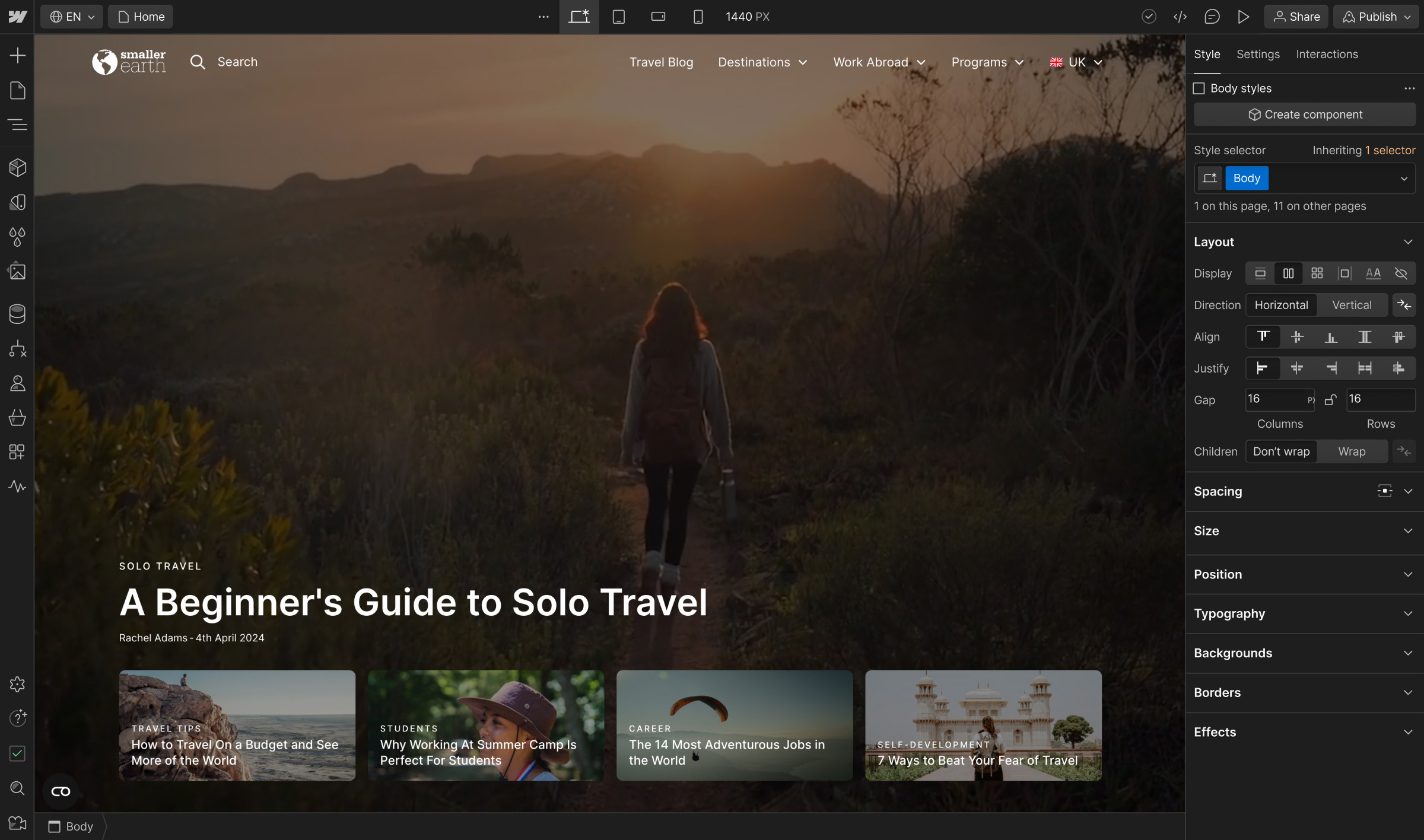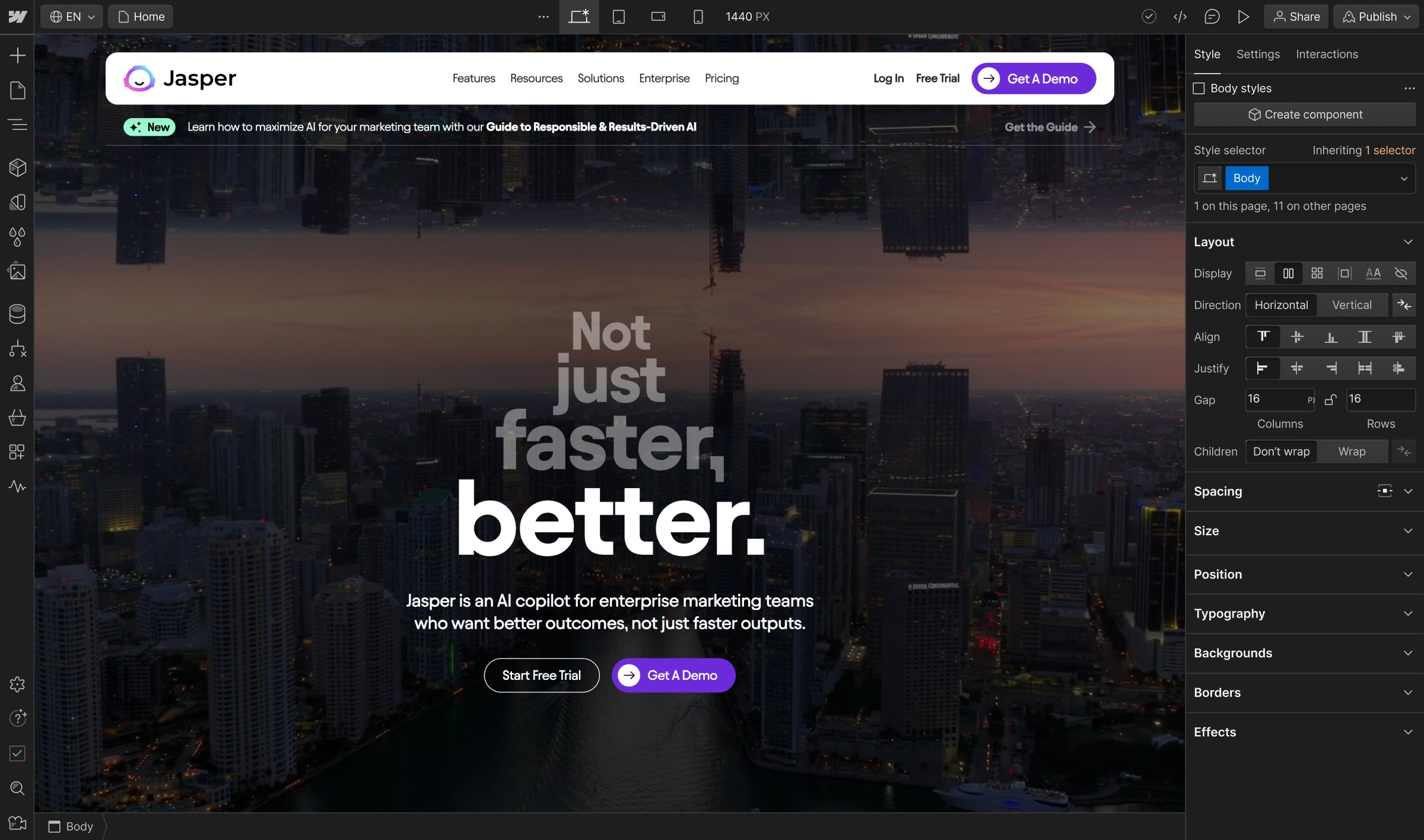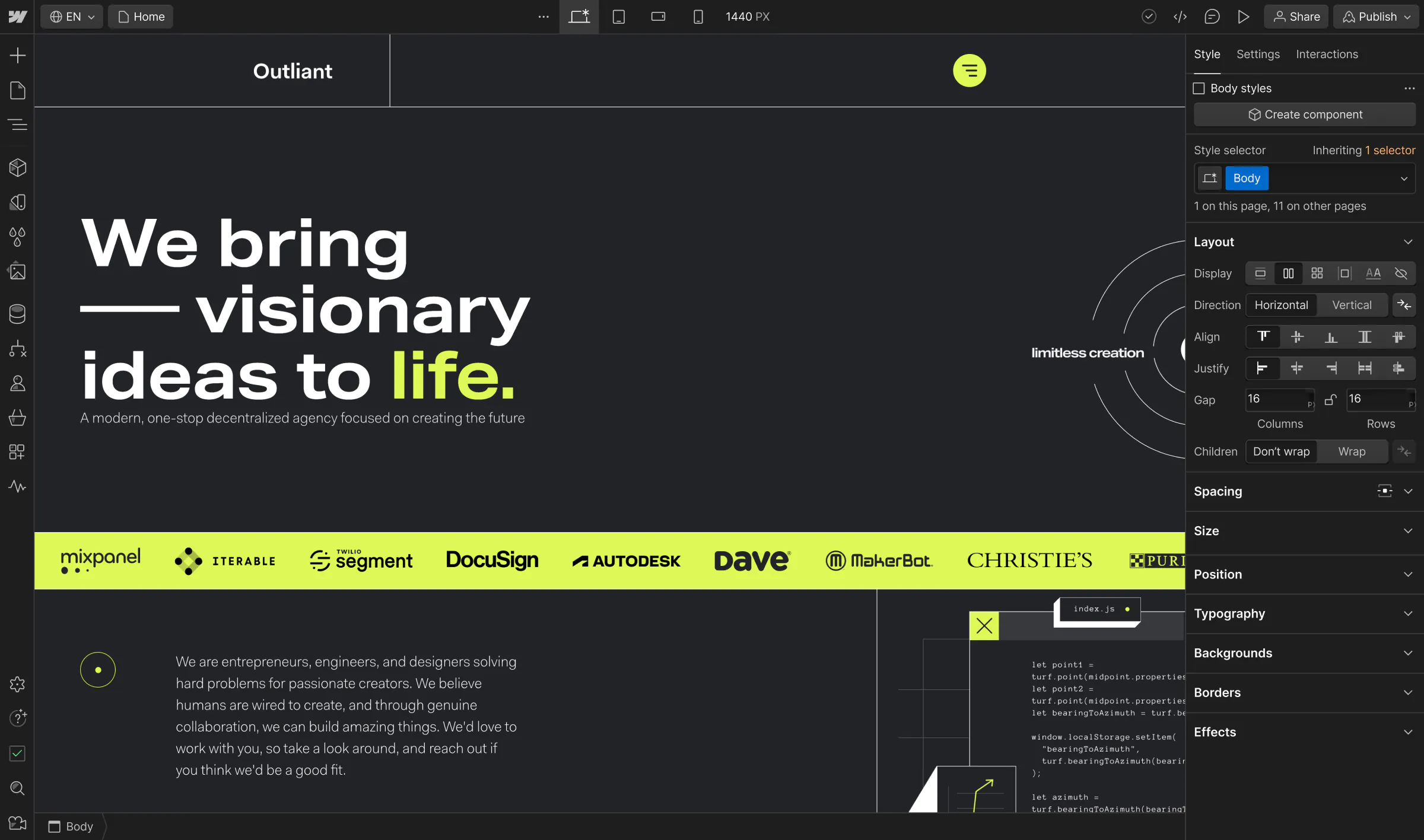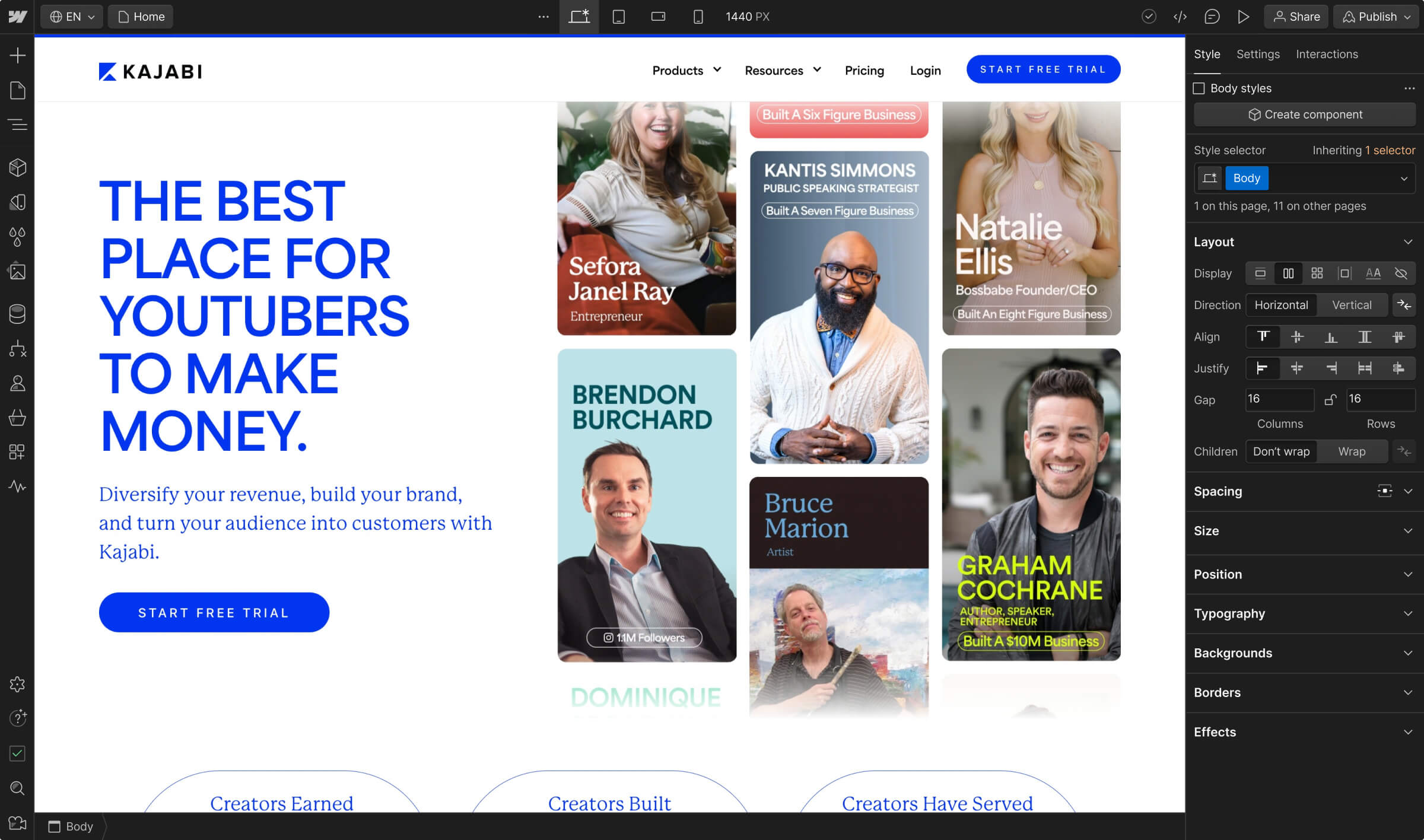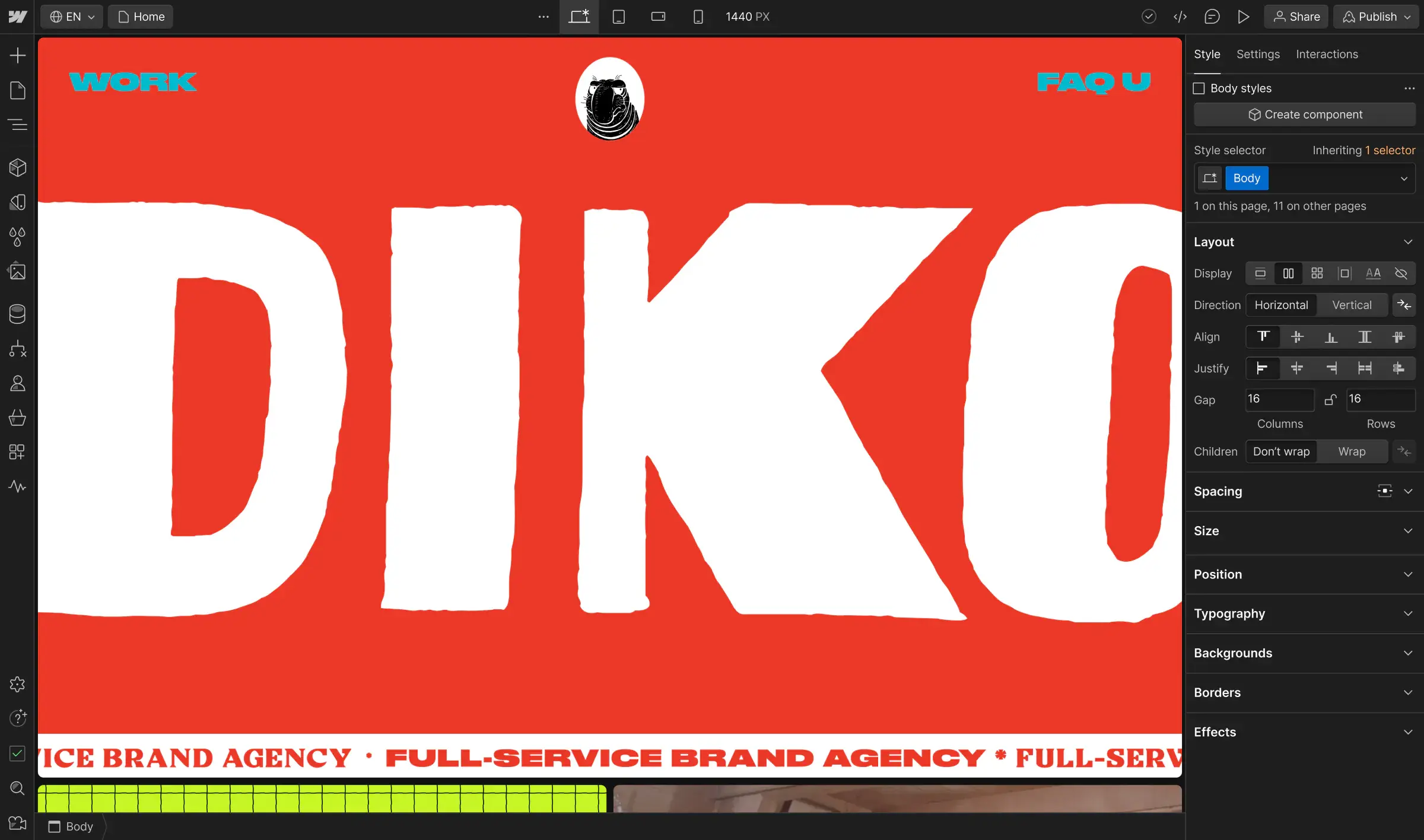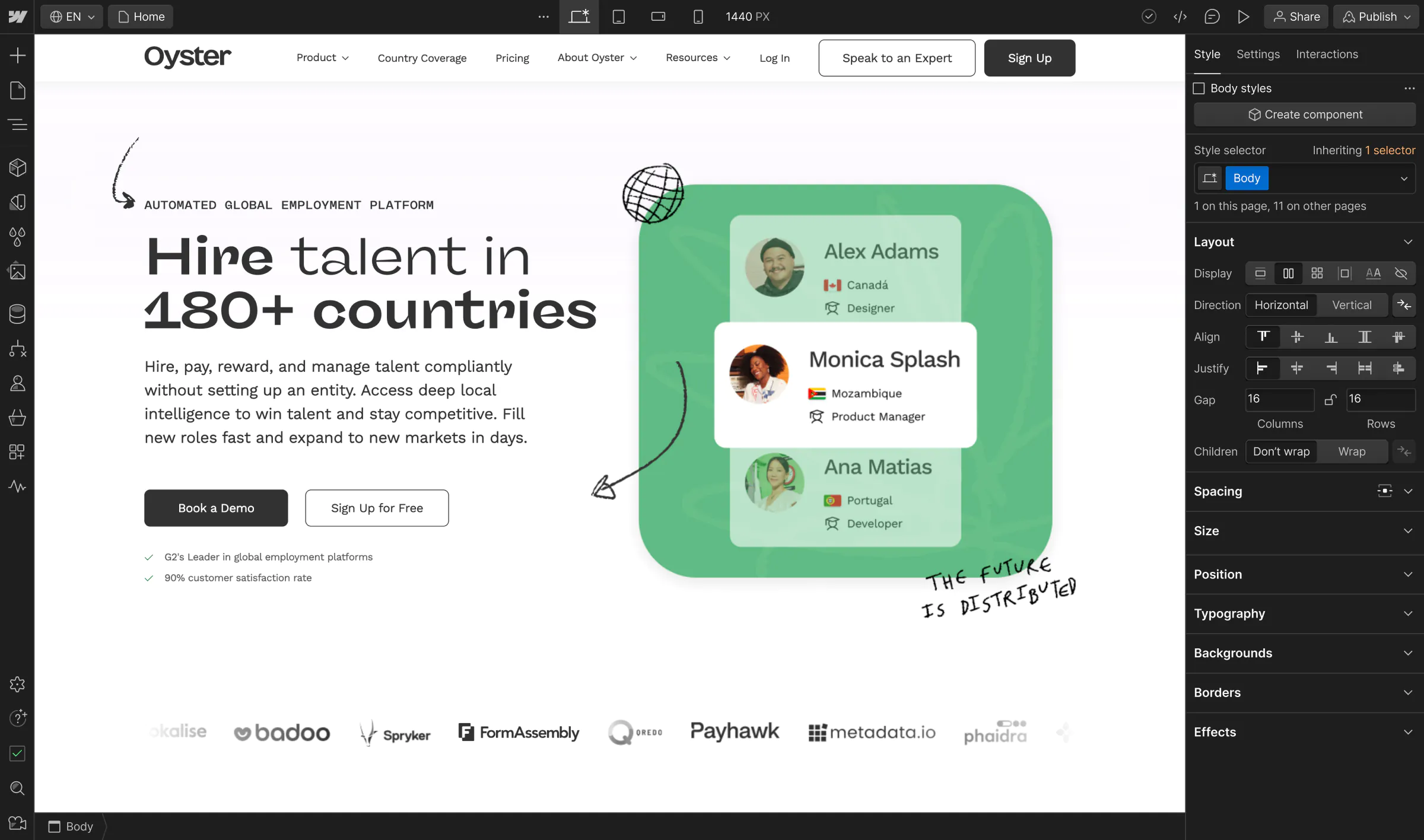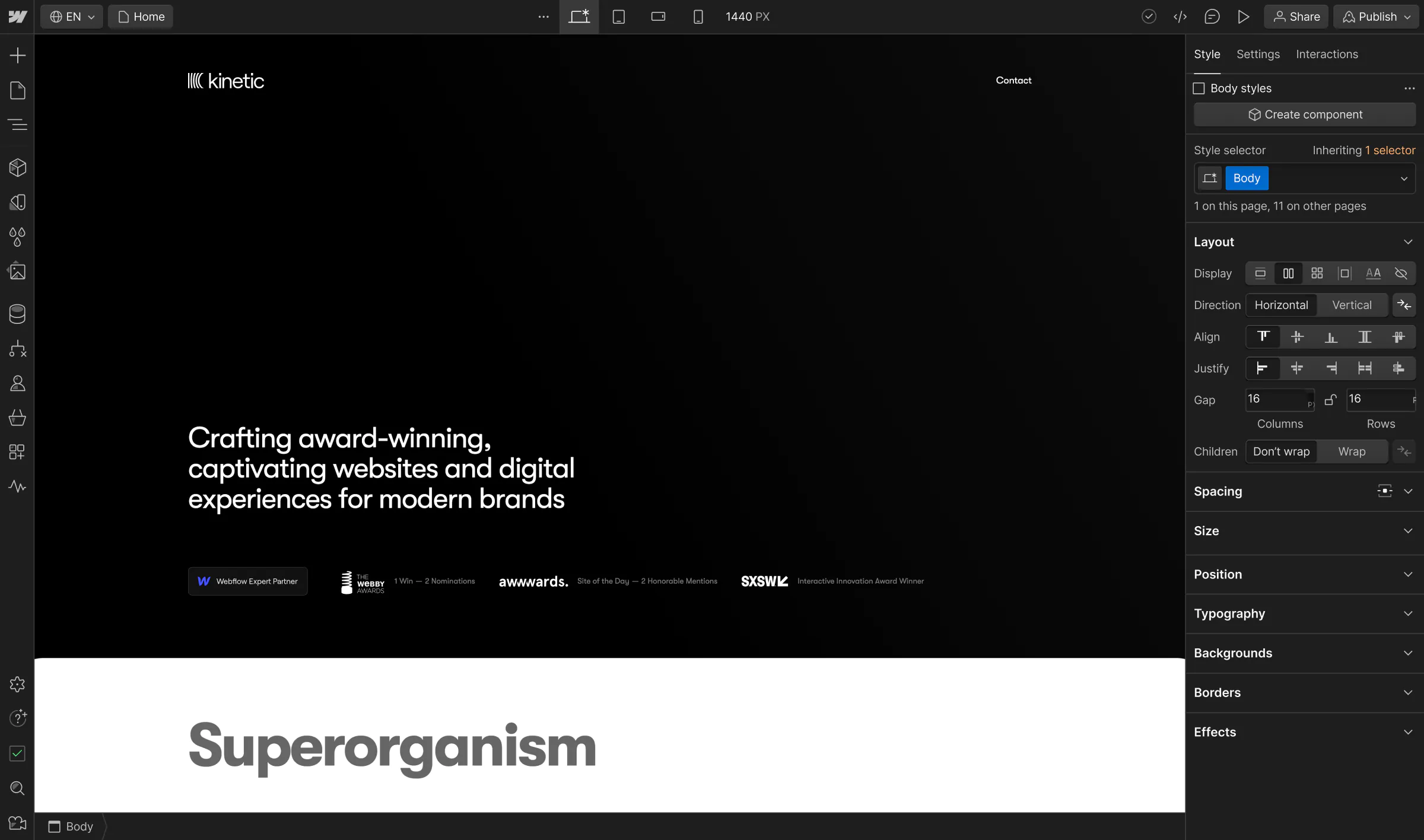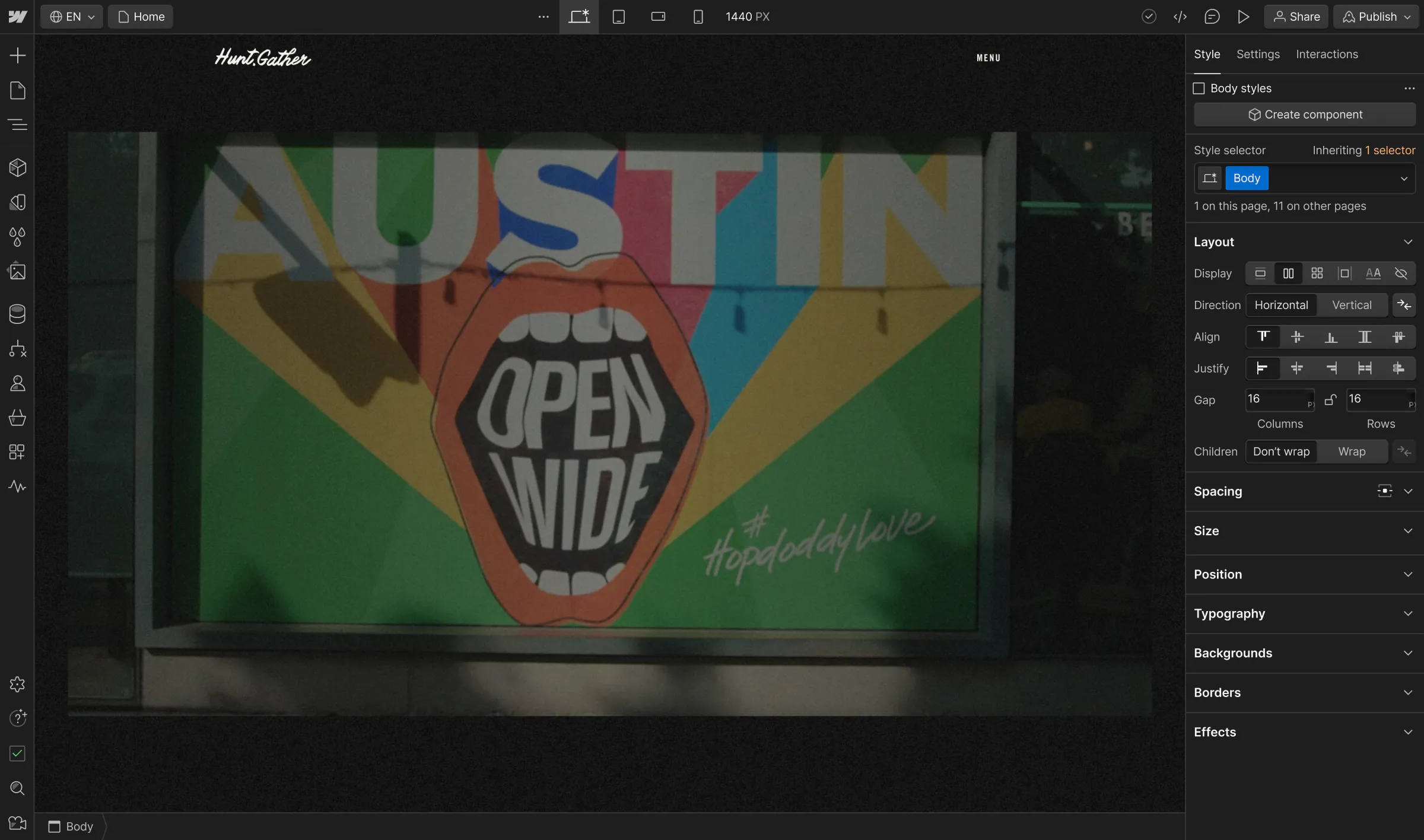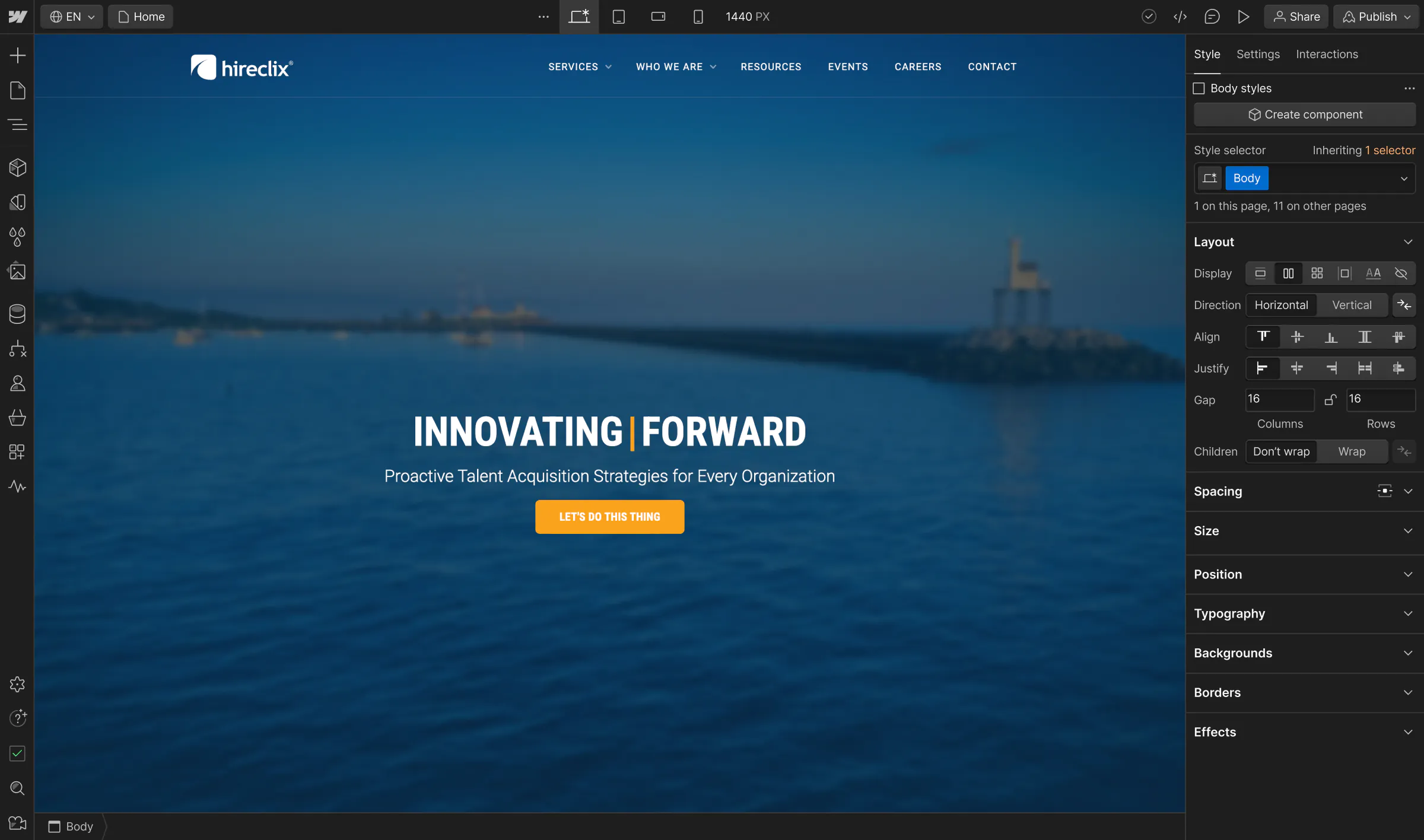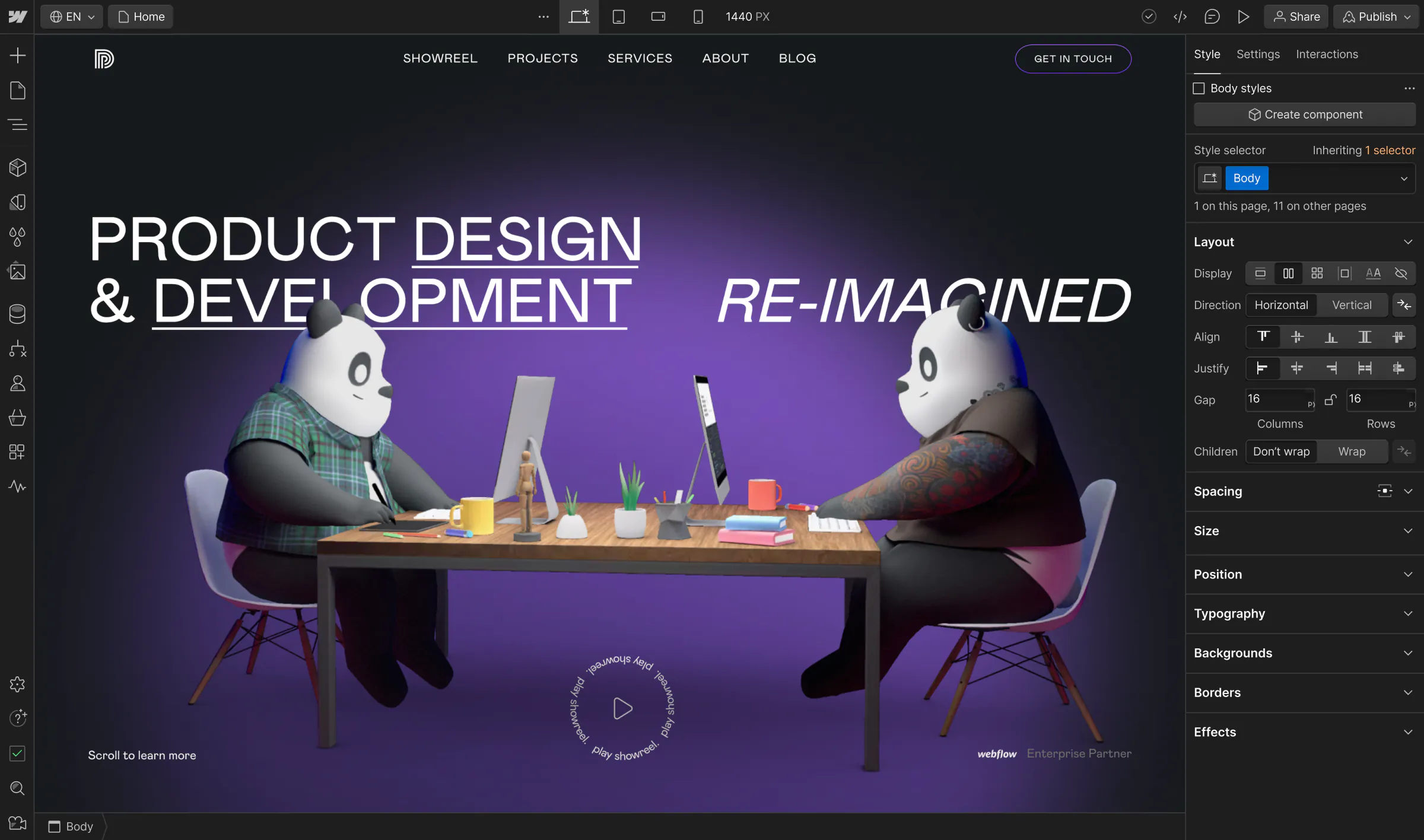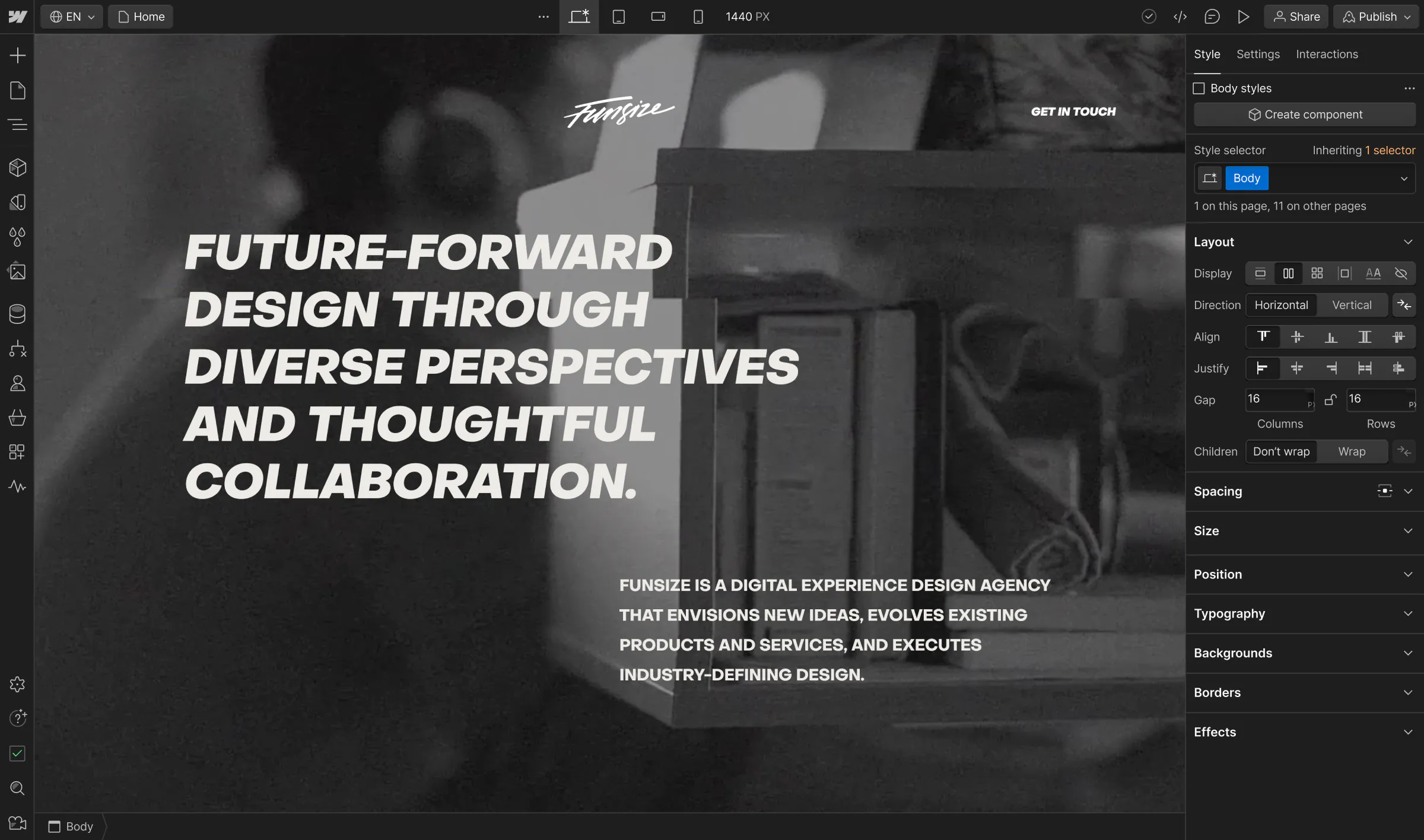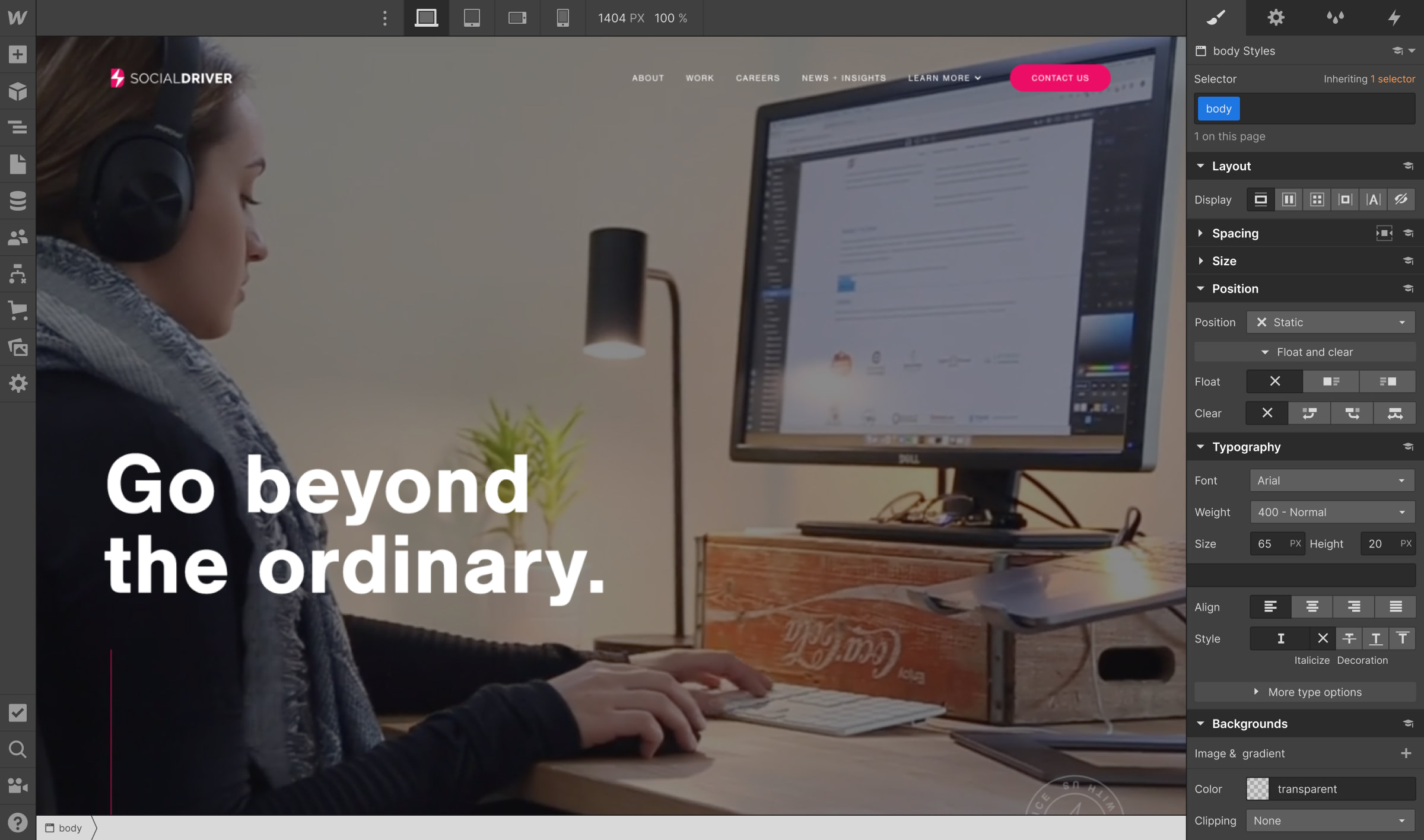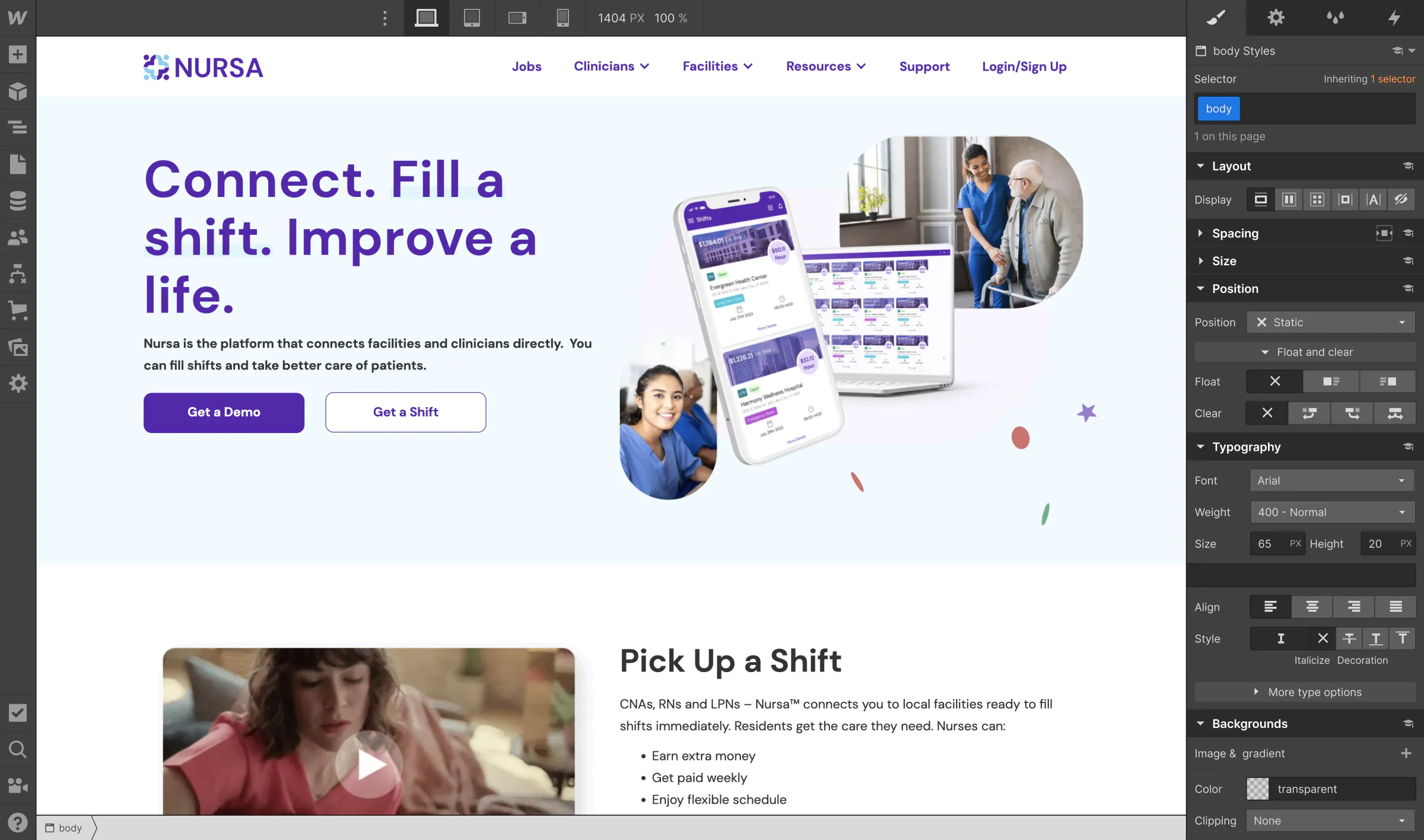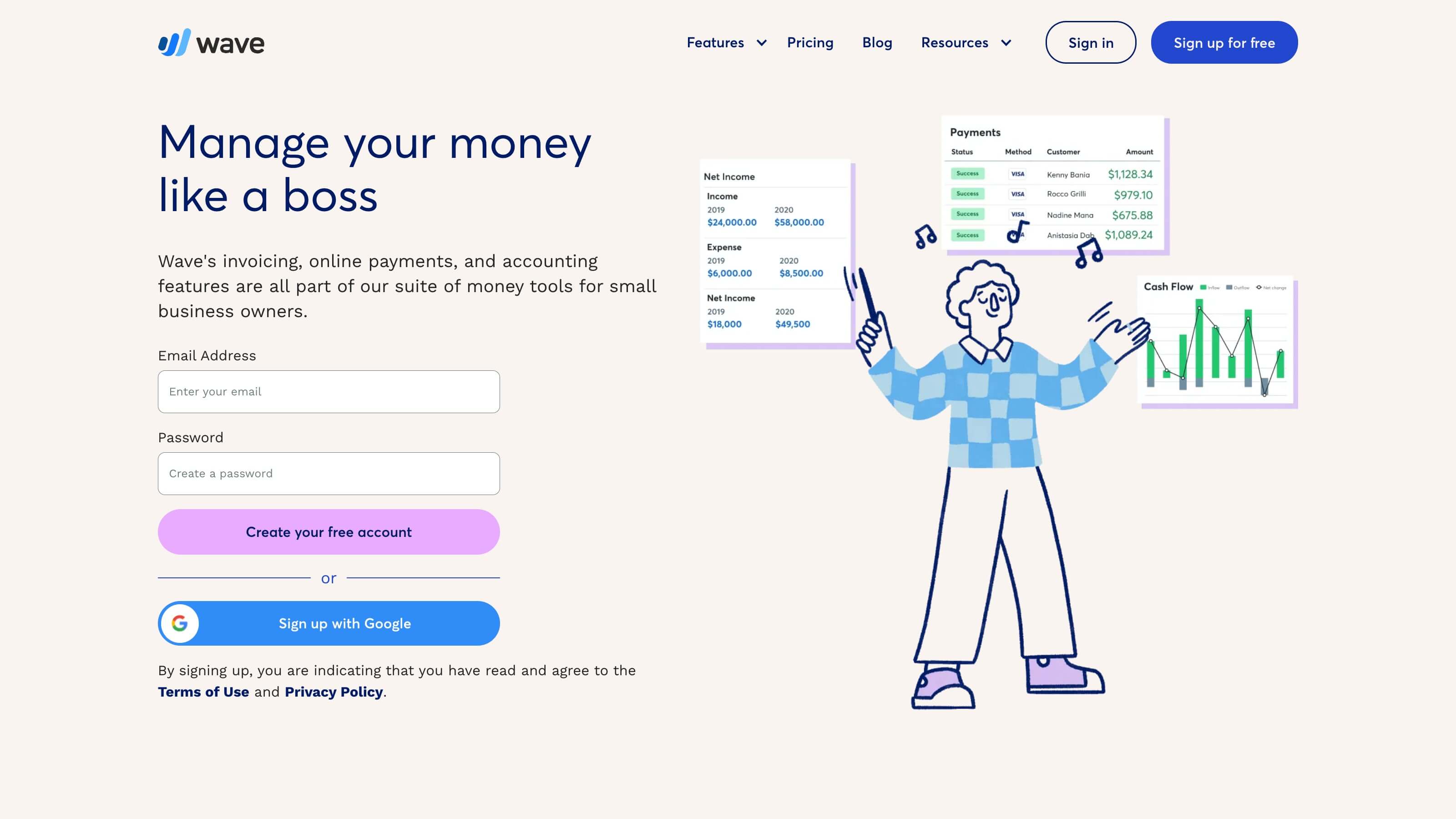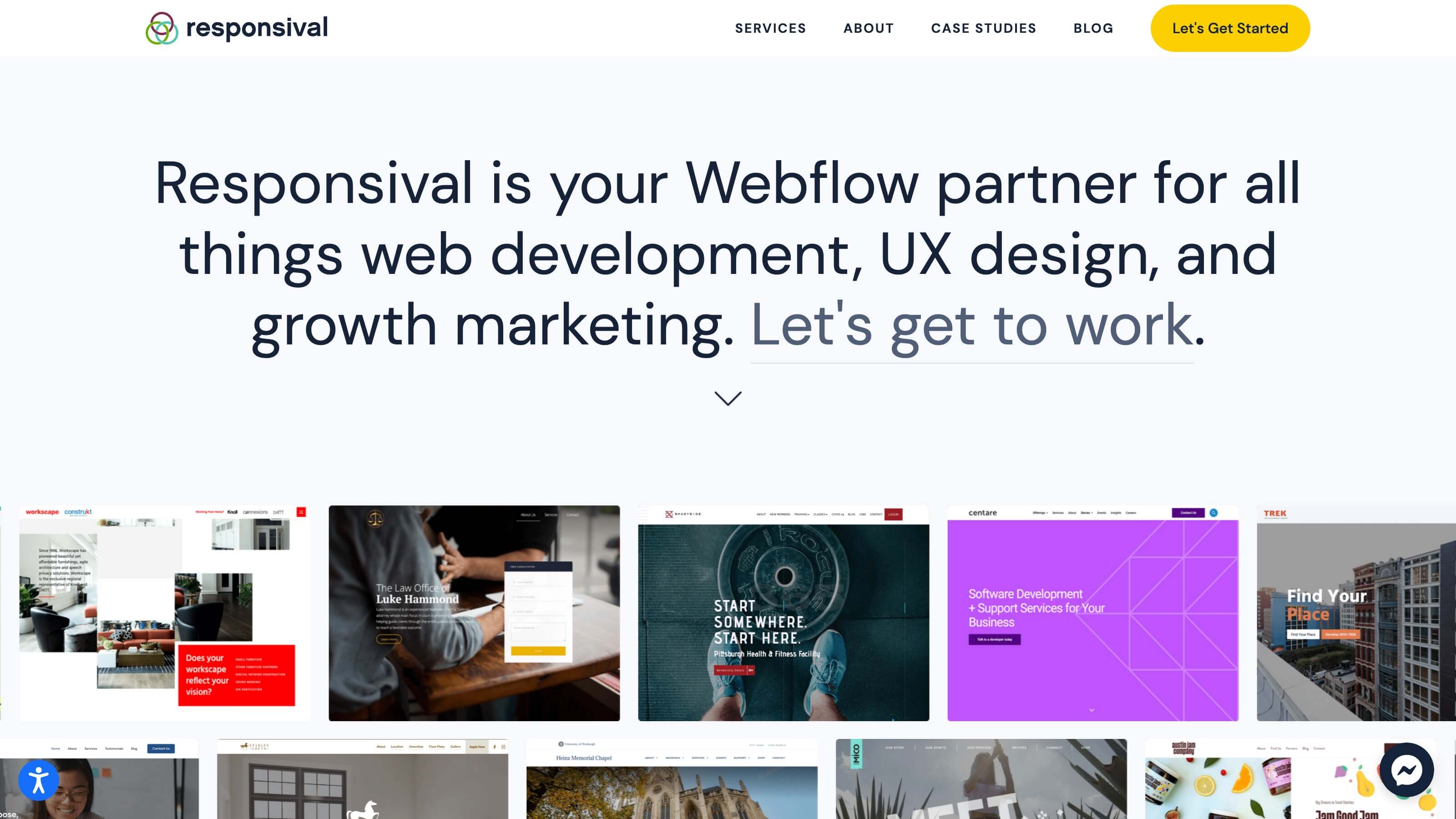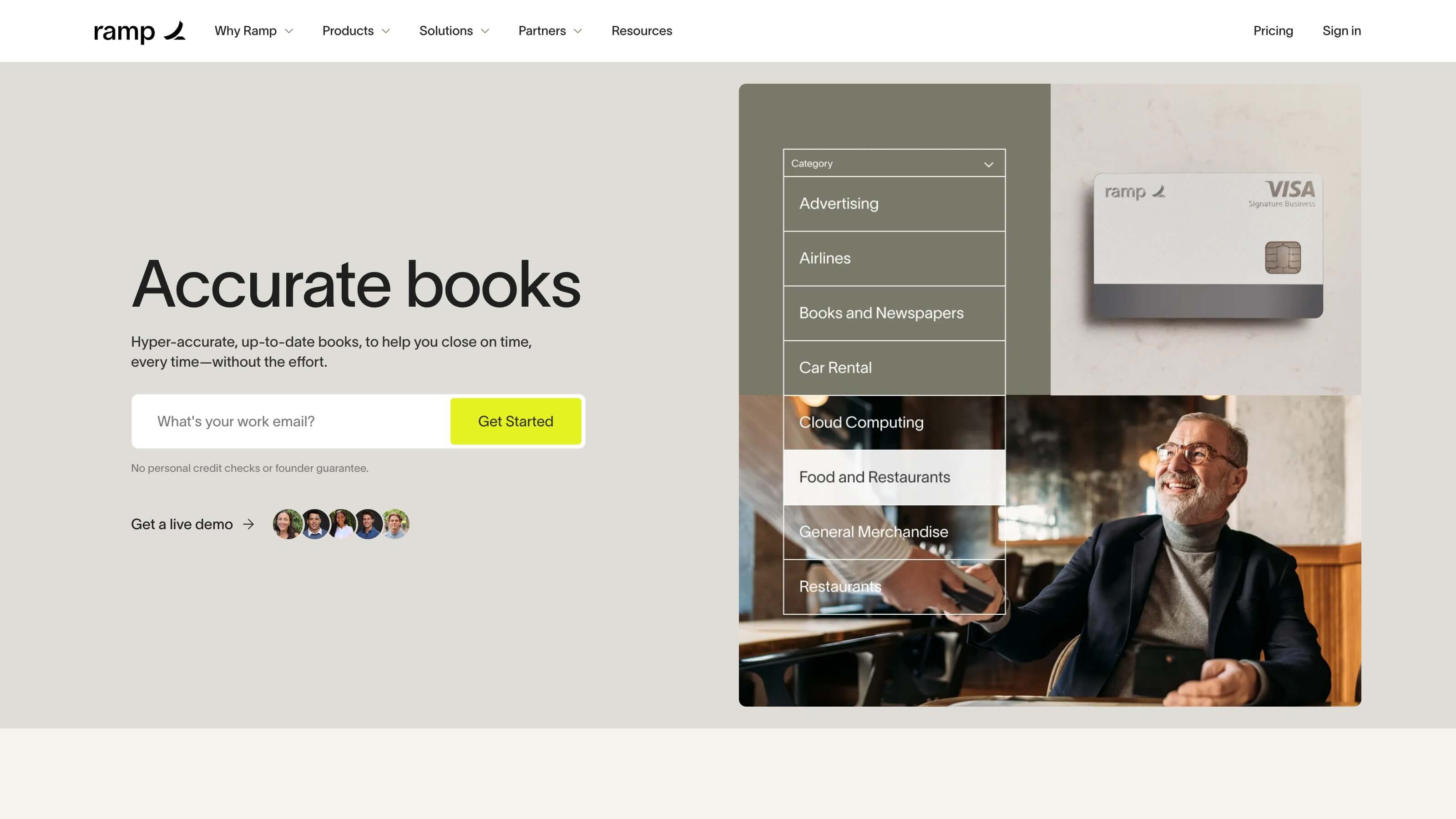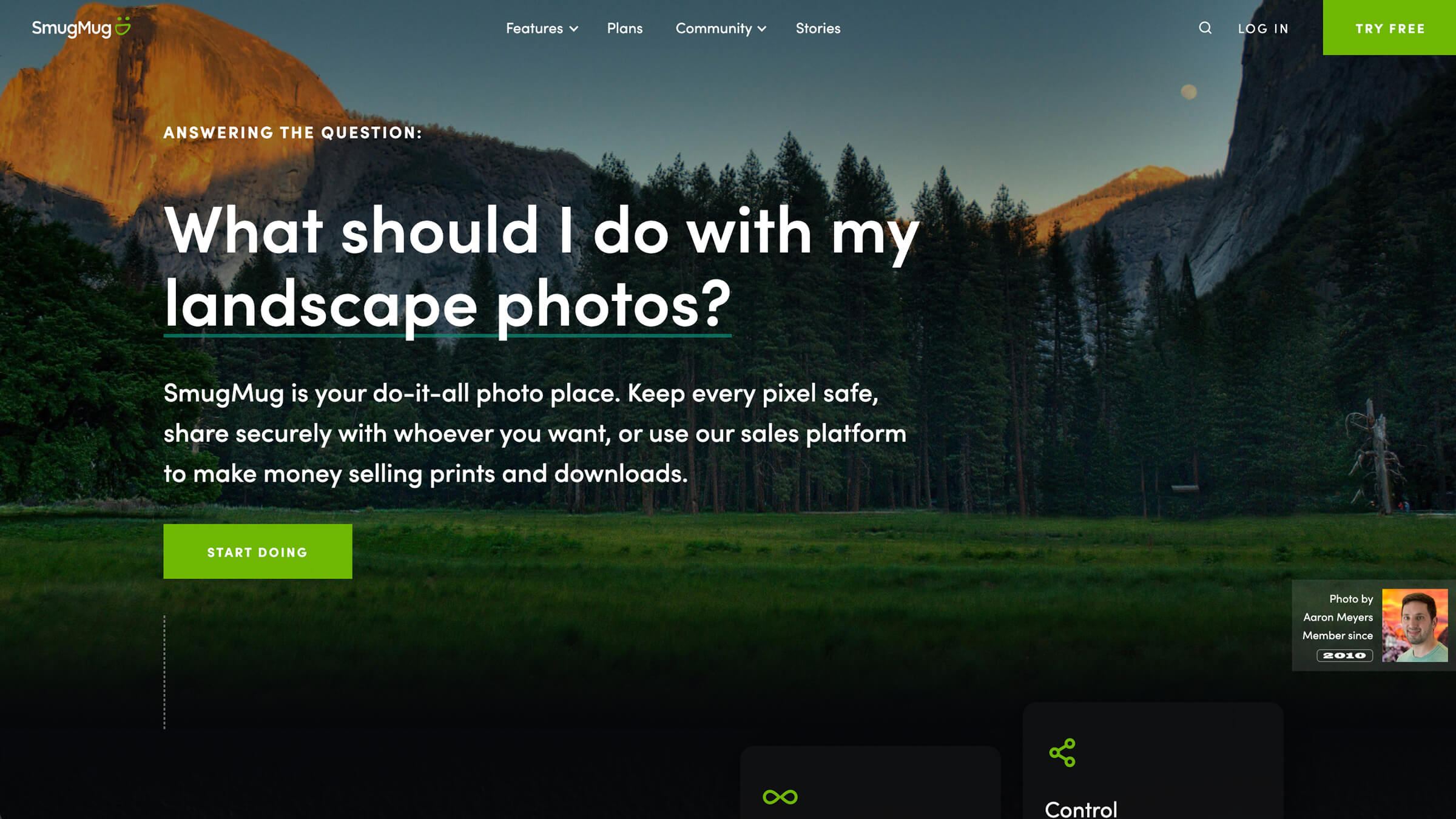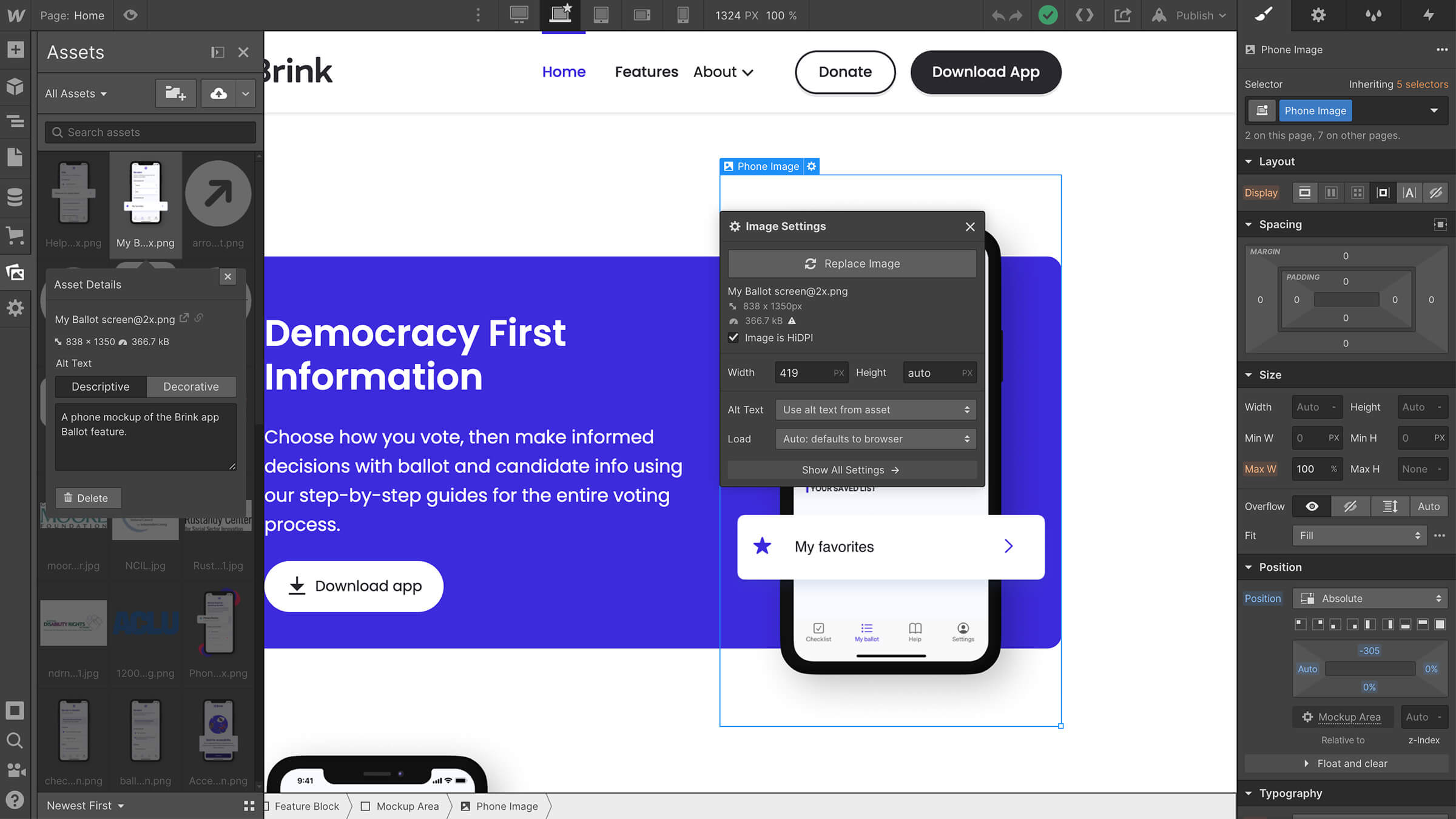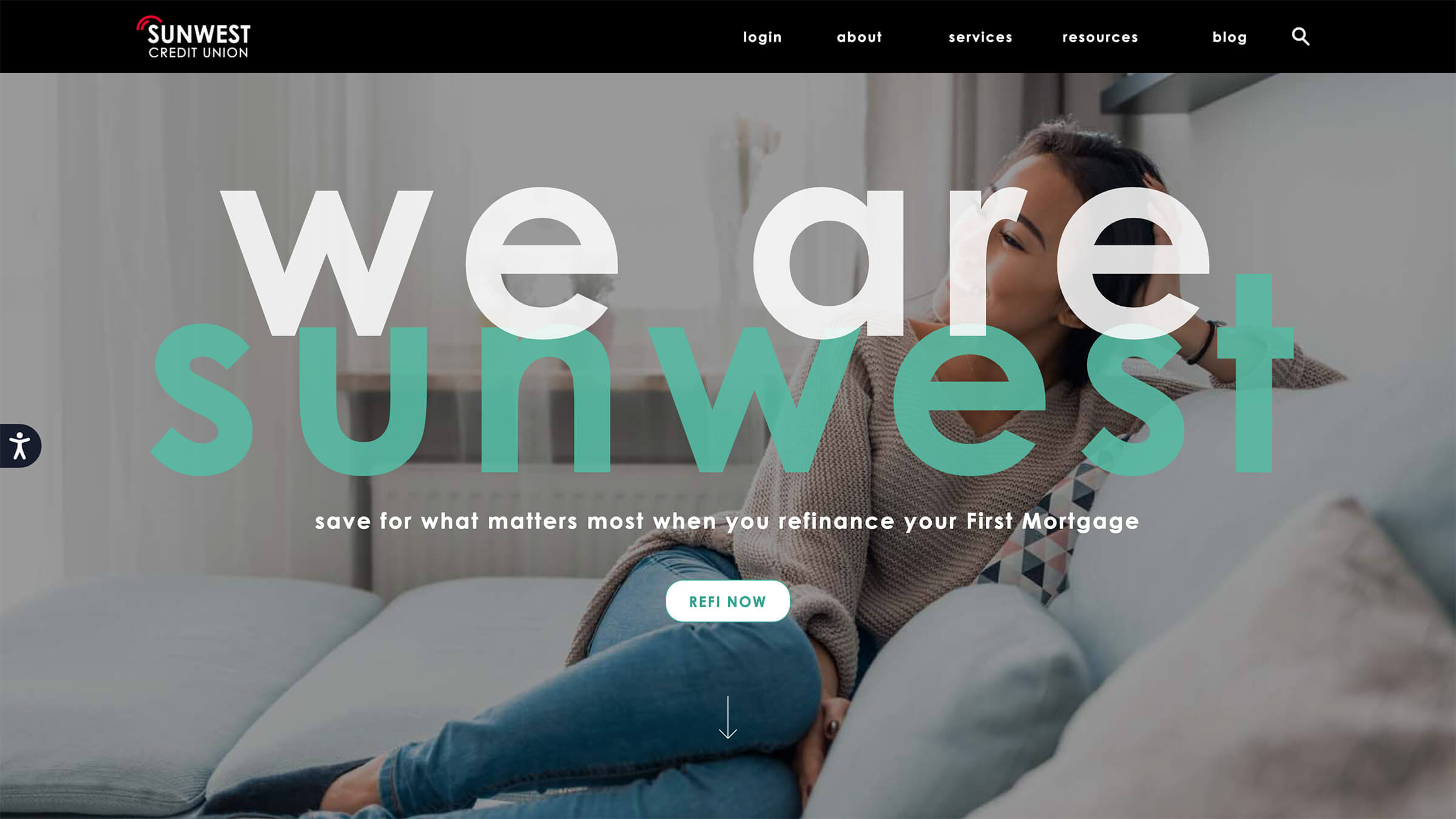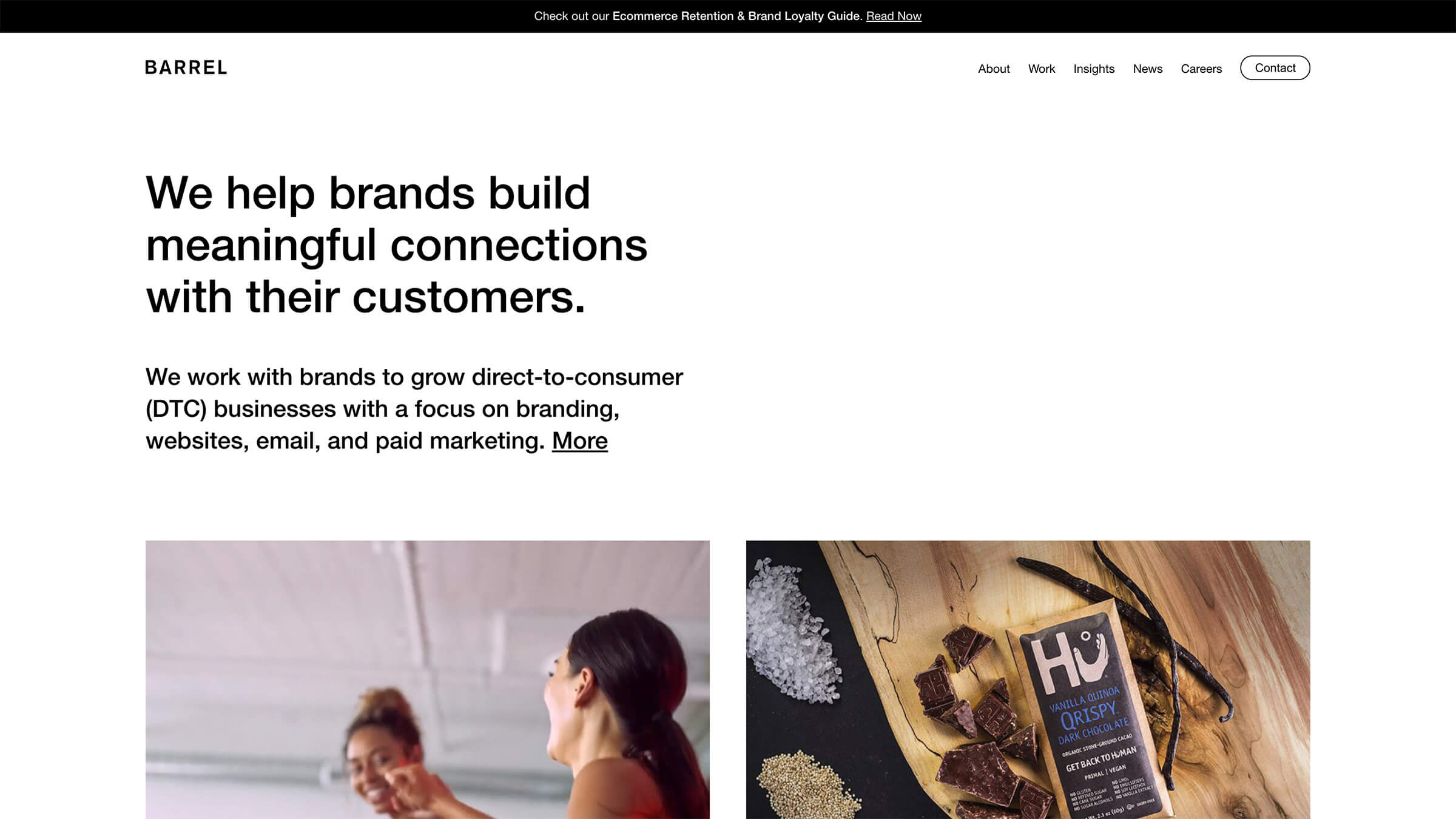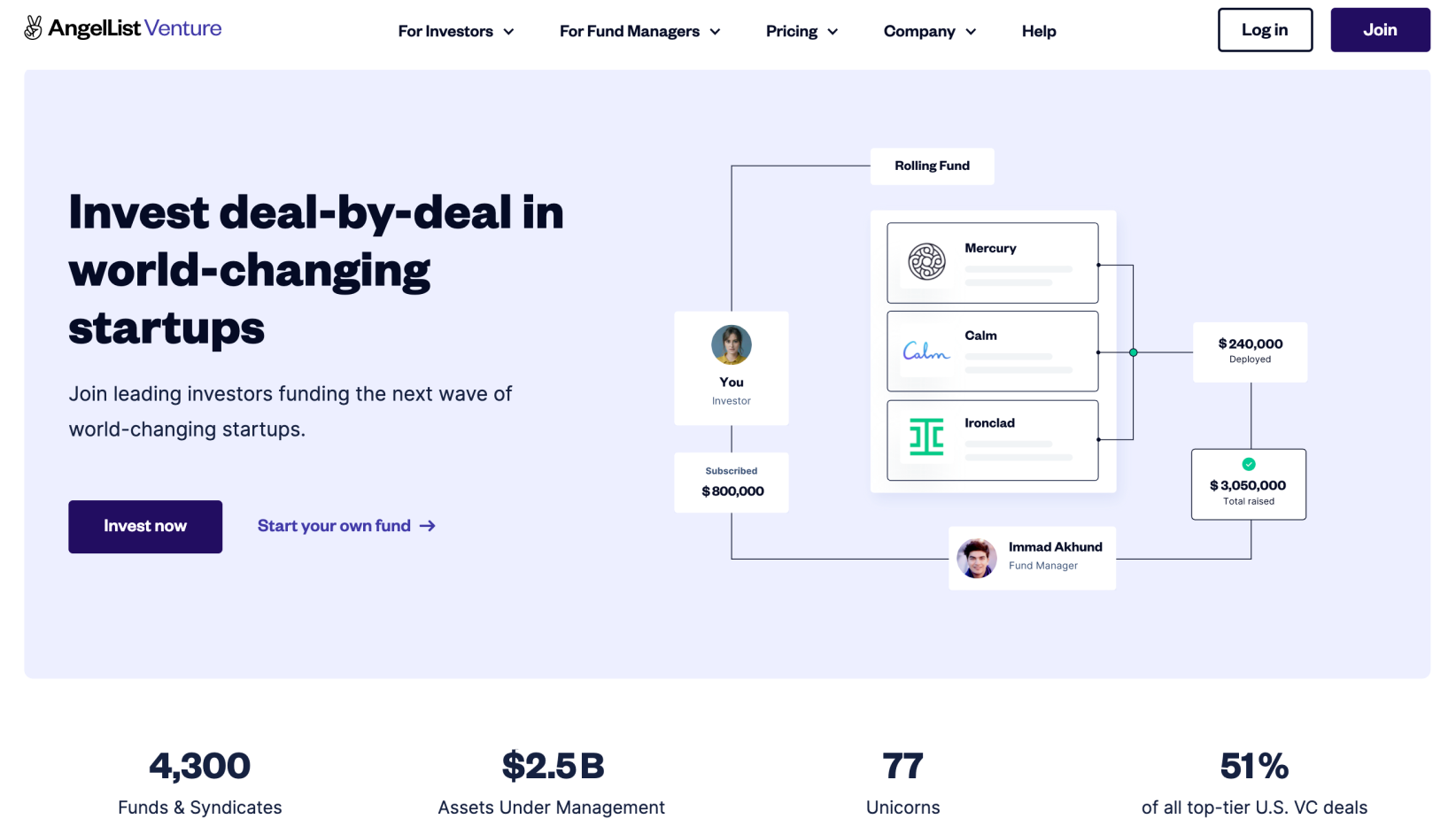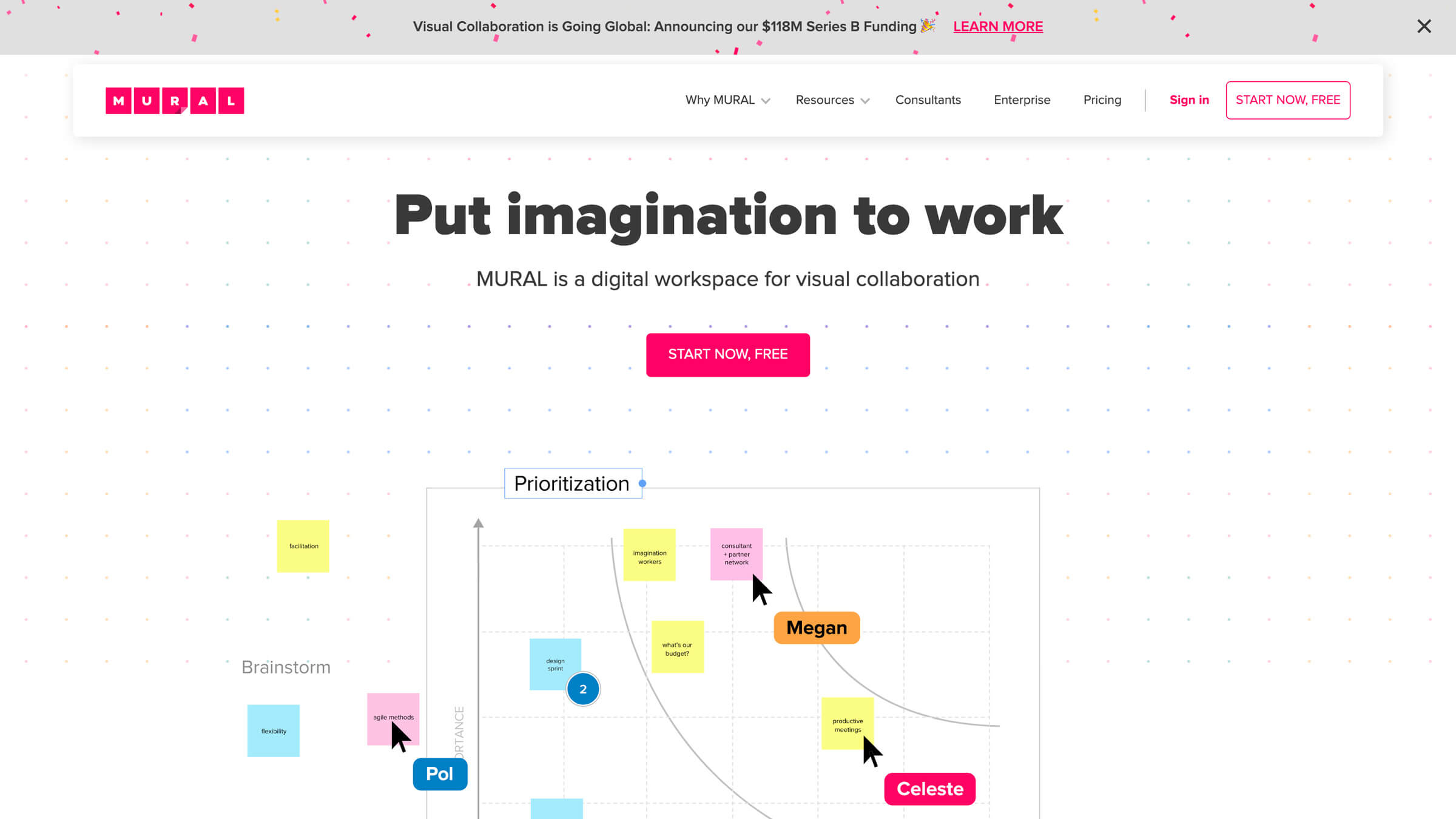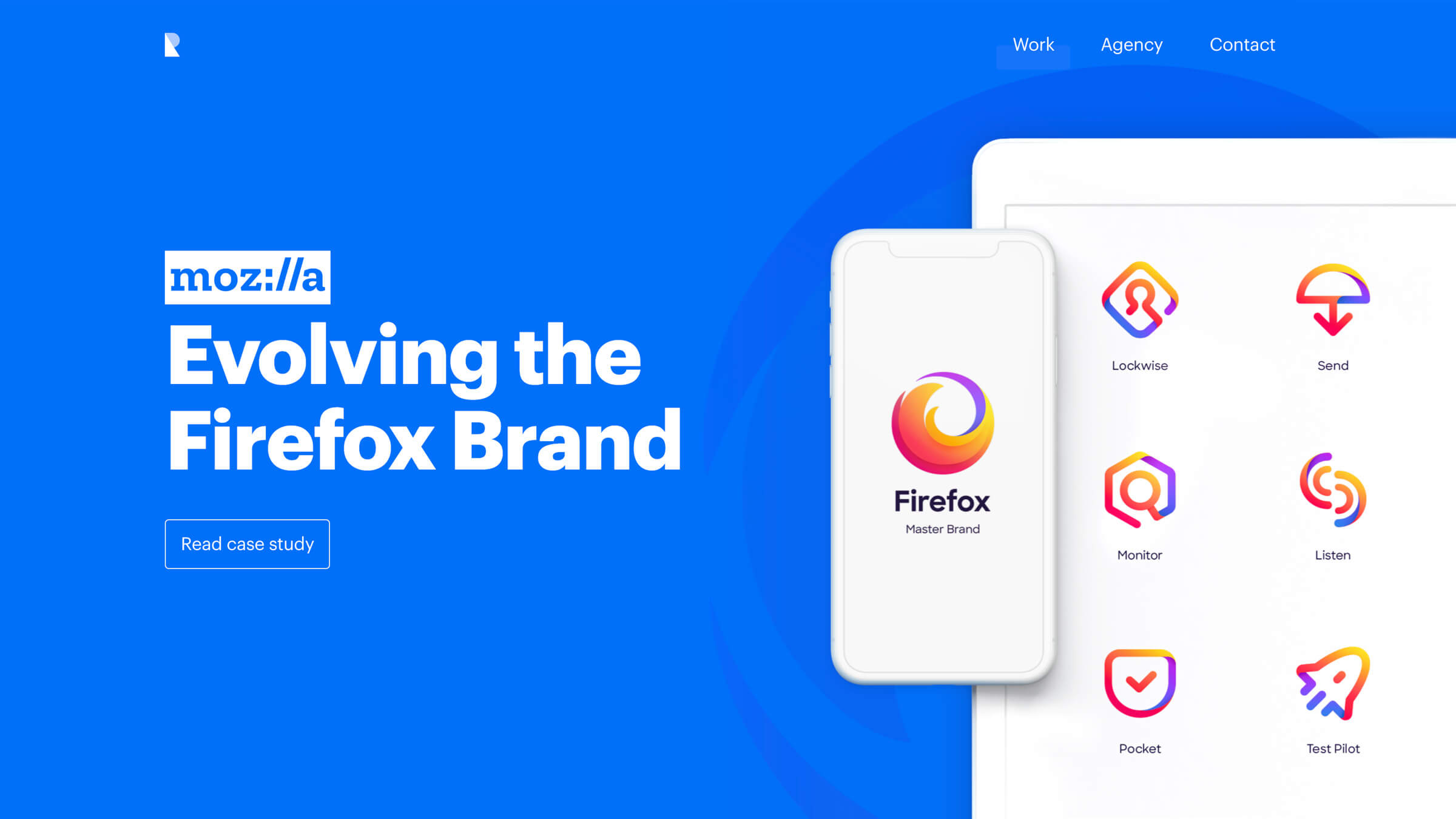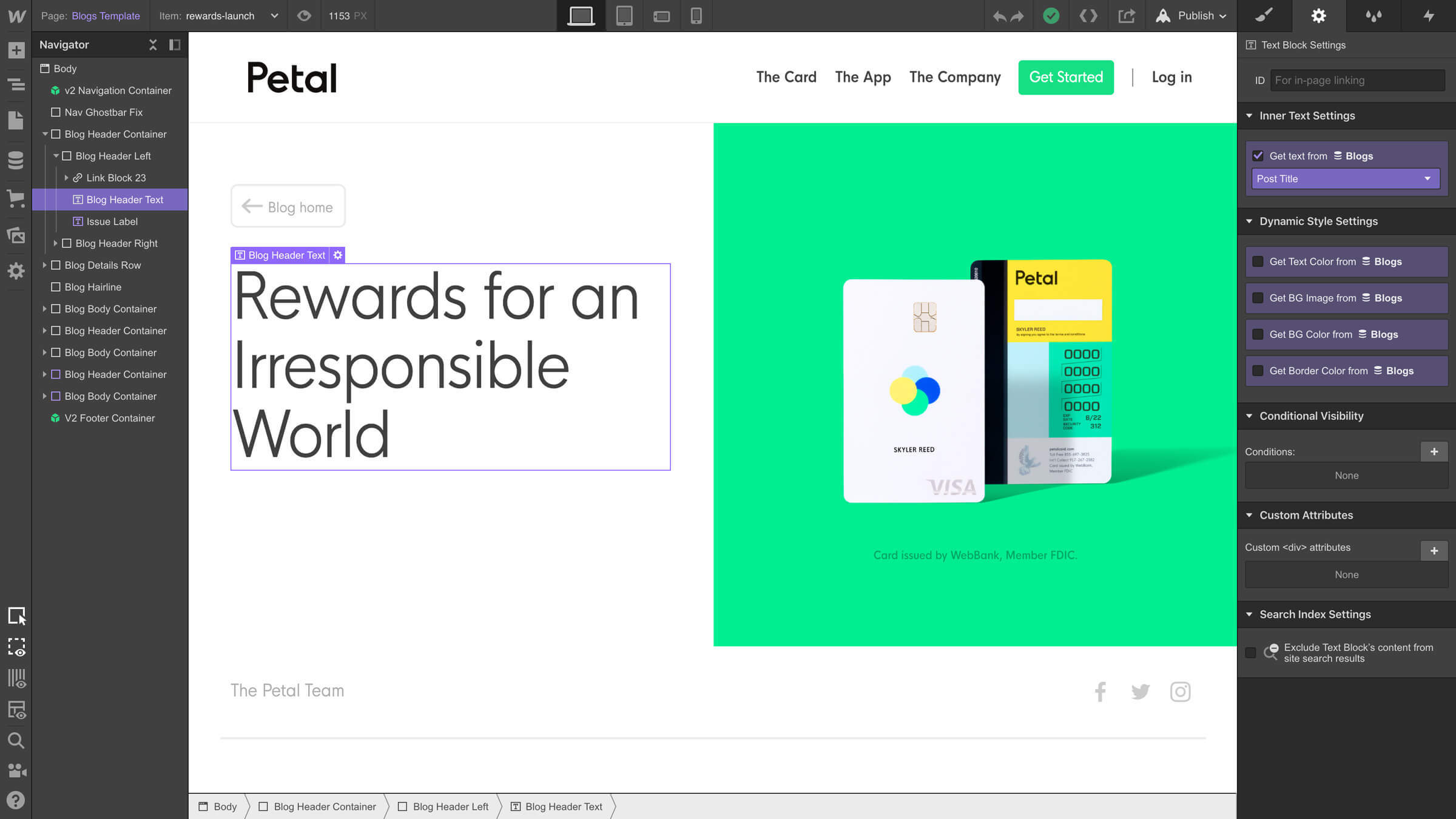Spin Master reclaims brand equity to scale 38 iconic brands with Webflow
A global leader in children’s entertainment, Spin Master was looking to grow their web presence without relying on limited developer resources. With Webflow, their creative and engineering teams have transformed internal collaboration and efficiency to deliver websites at scale.
Unlock your site’s full potential with best practices vetted by our experts. Learn the Webflow Way.
“Webflow Enterprise was our first choice because it fills subject matter expertise gaps that we might otherwise need to supplement with additional headcount or outsourced resources. Our marketing team can now own our destiny and ship far more websites more efficiently.”

Back in 1994 in Toronto, Canada, Spin Master introduced their first product: a nylon stocking-covered head with grass seeds as “hair”—and within six months, it had generated $1.5 million in sales. Ever since, Spin Master’s reputation for innovative toys has grown with their product line into a $2 billion global children’s entertainment company. With 29 offices in 20 countries, more than 2,000 employees work on many beloved kids’ brands, like PAW Patrol, Hatchimals, Kinetic Sand, Etch A Sketch, and Rubik’s Cube.
Spin Master’s three creative centers—Toys, Entertainment, and Digital Games—are served by their own internal product and design teams as well as a unique network of inventor partnerships and acquisitions. This portfolio is mirrored by a complex web technology stack, with teams using a combination of Contentful, Gatsby Cloud, and more to deliver web experiences. But managing these platforms often requires specialized developer resources, which impedes Spin Master’s ability to launch and optimize their growing portfolio of brand sites.
Their original identity as a “toy company” was deeply embedded in Spin Master’s culture, driving the team to more heavily prioritize “toy only” online. To tell a cohesive story and grow brand equity, they needed to thoughtfully integrate Entertainment, Digital Games, and Toys.
To lead this digital transformation, Christopher Law joined the team as Director of Customer Experience. In an effort to unify and optimize each brand’s unique online presence, the team quickly realized that they needed a solution that empowered their marketing team to be more agile and take ownership of their brand narrative.
Marketing gains the flexibility to deliver web experiences 3x faster
Our previous web development processes were long, expensive, and frustrating. With Webflow, we’ve found efficiencies with a better operating model between design, marketing, and development.
- Christopher Law, Director of Customer Experience, Spin Master
Spin Master’s headless setup meant marketers were heavily reliant on developers and all web requests were bundled with enterprise projects, which typically got deprioritized for higher-priority engineering work. There were times the team also felt limited with the creative freedom they could bring to new web experiences. “Rather than design guiding development, it was development guiding design, which meant we weren’t able to represent our brands as creatively as we wanted to,” he explains.
The team also needed to ramp up content production. Without it, third-party sites would create their own pages, like episode guides for PAW Patrol that didn’t match the curated storylines their creative teams dreamt up. “With Webflow, we saw an opportunity to lead the online narrative and take back brand control,” he says.
The purpose of Spin Master’s brand sites is to better showcase their products, providing educational resources and tutorials to help users navigate each play experience. One of the more complex experiences is PAW Patrol, which leverages a combination of Webflow’s visual-first CMS along with a headless API on Shopify to power the ecommerce part of the site. Since launch, Paw Patrol has seen a 400% increase in organic search volume.
Another success was the Rubik’s Cube site, which was built in two months from ideation to launch. The team has created collections and templates within a powerful MAST design system to streamline the process for future brand sites, as well. On the license team, they launched Unicorn Academy in three business days and it’s grown over 300% in 6 months. “We now have a much more efficient process that saves time and money for the business so we can focus on more strategic things like personalization and website optimization,” says Chris.
Prior to Webflow, building an end-to-end website would take at least six months. Spin Master’s marketing team can now deliver new web experiences in two months, with one-off pages taking as little as a week. “Now we’re generating leads, regaining brand equity, and representing ourselves in the best possible way strategically,” Chris says.
Transforming collaboration across design, marketing, and development
Webflow doesn’t eliminate the need for engineering… it allows them to redirect their focus to more important work, and they can step back in for more complex requests.
- Christopher Law, Director of Customer Experience, Spin Master
Since adopting Webflow, Chris’s team has forged a tighter connection between the working groups across Toys, Entertainment, and Digital Games. All three creative centers are included in relevant work streams, enabling clear communication, accelerating productivity, and delivering results. “Being able to connect with hundreds of people and facilitate all of this through a centralized process with Webflow has been a game-changer,” Chris says.
With Webflow’s robust roles and modes of working, it’s easy to loop in additional stakeholders as needed. The team can assign relevant roles and permissions to the creative, brand, and leadership teams, making it easy to review, collect feedback, and iterate. They leverage branch staging to test branches in their own staging environment, and centralize communication with comments natively in the Designer. “Page branching empowers developers and designers to work together on web projects at the same time, which has drastically improved our workflows and delivery timelines,” Chris says.
The tight partnership with their dedicated Webflow Enterprise account team has also been integral to ensure the entire Spin Master team feels supported as they get up to speed with Webflow. They worked with their customer success manager (CSM) and technical architect (TA) to select the appropriate CSS framework and built a design system that would help their site scale, serving as the foundation for tighter collaboration across the business. Since the Spin Master team is building lots of sites, this framework has helped drive efficiencies and accelerated their time to launch.
“Having such an active Webflow CSM and TA on our side to help us justify the business value has been super powerful,” Chris says. “I can now focus on optimizing our sites and elevating how we build things together.”
Optimizing website experiences to foster brand loyalty
With Webflow, we can integrate third party tools through robust APIs and collect data to create a richer user experience on our website... that extensibility ultimately empowers us to meet our customers' needs faster.
- Christopher Law, Director of Customer Experience, Spin Master
To further expedite development, the team is dedicated to building a comprehensive library of reusable elements, enabling his team to rapidly deploy new pages. “Using Webflow has transformed how we’re able to bring new web experiences to market,” Chris says. “So far, we’ve doubled our output because of our scalable template libraries.”
This translates to more rapid experimentation, iteration, and deployment, ultimately leading to a faster and more adaptive response to market demand. Looking ahead, optimizing for SEO and tracking user interactions remains a priority. Each site visit gathers valuable data that informs how they shape the customer experience opening the door for future personalization opportunities. “Webflow will continue to be an integral part of our technology stack and help support Spin Master as we scale our ecosystem of brands.”
Explore more Enterprise stories
Explore more stories
Get started for free
Try Webflow for as long as you like with our free Starter plan. Purchase a paid Site plan to publish, host, and unlock additional features.
Try Webflow for as long as you like with our free Starter plan. Purchase a paid Site plan to publish, host, and unlock additional features.


